The catalogues of artists, artworks, and exhibitions are on-going records of cultural producers and objects broadly engaging with the themes of surveillance technologies and policies in Canada after 2001. The adjudication process of who and what to include in this list is open and flexible; if you’d like to make suggestions, please send a message via the Contact page. Ian Verchere is a Vancouver-based writer and creative director who has produced best-selling video games for Electronic Arts, MTV, and his own company Roadhouse Interactive.Artists + Artworks + Exhibits
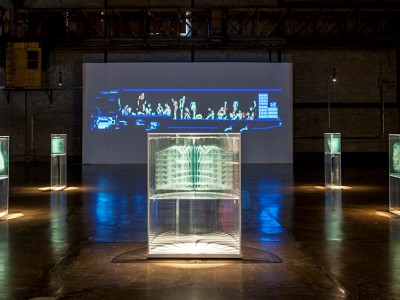
David Spriggs
Artist
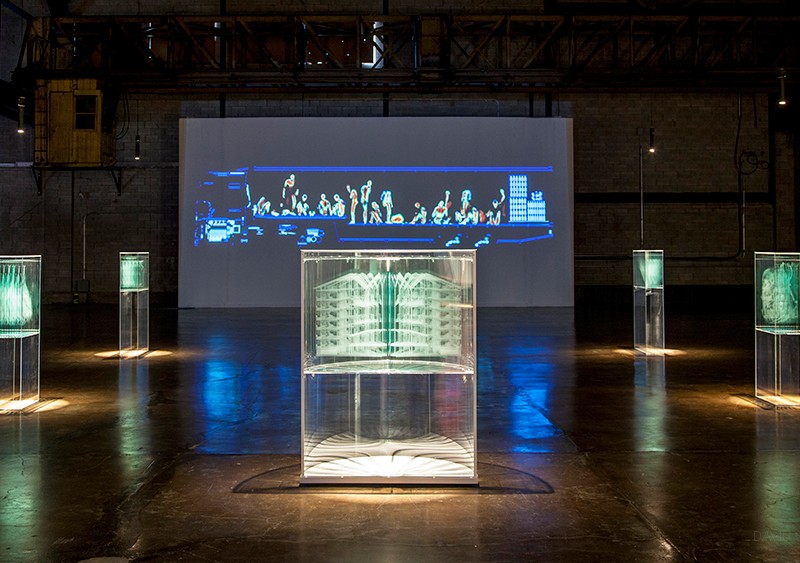
David Spriggs
Artist
Database works: Spriggs, David. The Logic of Control. 2014. Layered engraved glass sheets in half column display case. // Spriggs, David. Transparency Report. 2014. Engravings on 9 sheets of tempered glass layered and spaced in transparent plexi-glass display units. // Spriggs, David. The Visible Spectrum. 2015. Digital video projection installation on a 4 minute loop.
Born in Manchester, England, David Spriggs currently lives and works as a large-scale installation artist in Montreal. He has exhibited nationally and internationally, and his work is in the permanent collection of both the Montreal Museum of Fine Arts and the National Fine Arts Museum of Quebec. Spriggs earned his BFA from the Emily Carr Institute of Art and Design in Vancouver and his MFA from Concordia University in Montreal.
Website:
http://www.davidspriggs.com/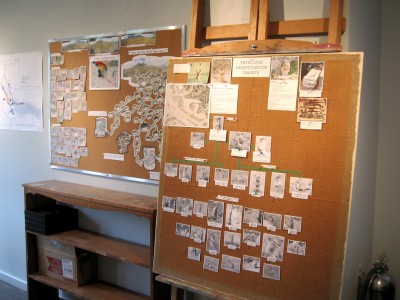
Conspiracy Case
Artwork | Edwin Janzen, 2012.
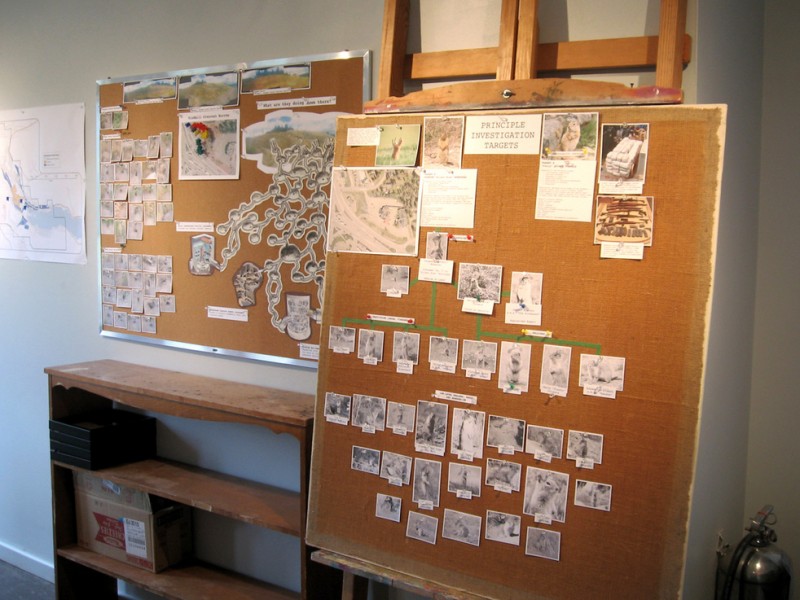
Conspiracy Case
Artwork | Edwin Janzen, 2012.
Performance/installation (photographs, looped videos, drawings, office furnishings, TV sets) | Exhibited at at the Station House Gallery in Williams Lake, BC (July-August 2012)
Janzen’s Conspiracy Case features installation and performance elements. Originally mounted in July and August 2012 at the Station House Gallery in Williams Lake BC, this project involved Janzen creating his own satirical law enforcement agency to investigate and surveil the activities of local burrowing animals, such as ground squirrels and marmots. He transformed the gallery space into a police-style headquarters as the space from which he could conduct investigative business, and developed a fictional law-enforcement agency—INTERPOL International Task Force on Rodent Crimes (IITFRC). Using a series of still and video cameras, he would collect evidence of rodents’ assumed guilty activities in the surrounding areas. According to Janzen, his intention with this piece was “to implicate the local public, posting “Wanted” notices around the town and inviting informants to come forward (many did).” In creating a mock scenario or parody of the policing strategies used for surveillance, although most commonly of human animals, Janzen’s project highlights the structures and systems in place to map, track, monitor, and potentially criminalize the everyday activities of individuals. You can see some of the Conspiracy Case surveillance videos on Janzen’s vimeo site at https://vimeo.com/58598922.
Website:
http://www.edwinjanzen.com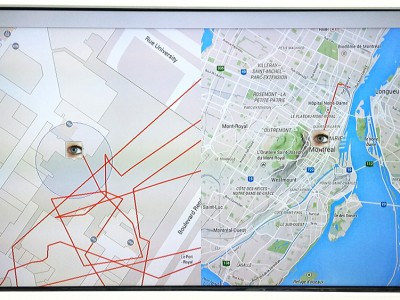
Mont-réel
Artwork | Eva Clouard, 2015.
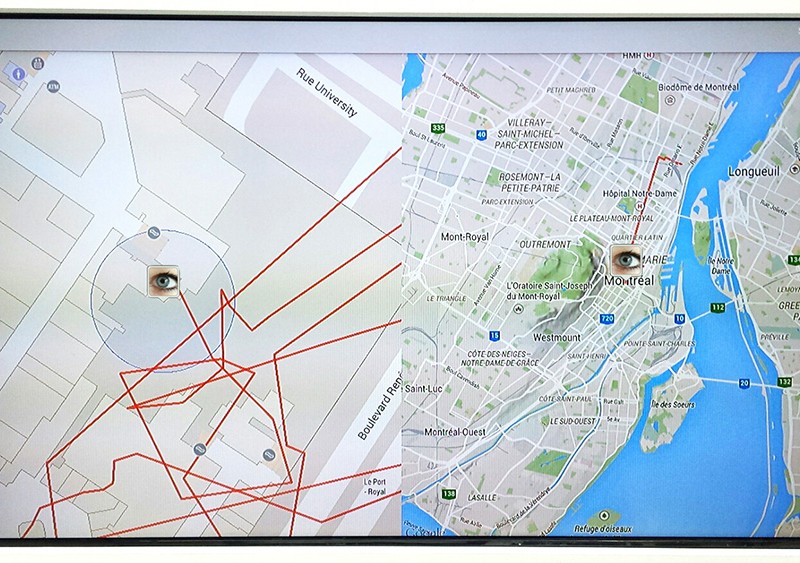
Mont-réel
Artwork | Eva Clouard, 2015.
Digital installation, Geolocation app, smartphone. Variable dimensions | Exhibited as part of "Art Souterrain" Festival in Montreal (2015)
French artist Eva Clouard’s installation Mont-réel (2015) was displayed for Montreal’s “Art Souterrain” Festival 2015 within the Palais des Congrès de Montréal. The installation features a television monitor that shows a map of the streets of Montreal with the artist’s whereabouts tracked in real time. By using an easily downloadable GPS app on her phone, Clouard’s project generates questions about how much of our daily lives, from are physical location to our private conversations, can be tracked through our personal electronic devices such as cell phones? It also begs the question of who has access to this personal data and how this information might be used? Offering herself as the subject of the surveillance, Clouard plays with the presumed boundaries of private and public life, and the ways in which our own everyday devices can be used as an agent of surveillance. The title plays on the location-style tracking nature of the work, somewhere between Montreal and mon réel (my reality).
Website:
http://www.evaclouard.com/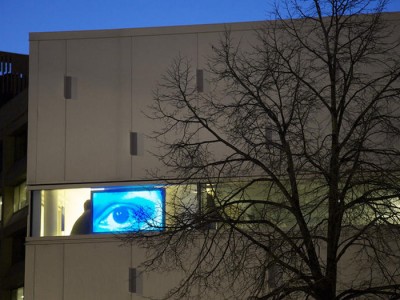
Donna Szoke
Artist
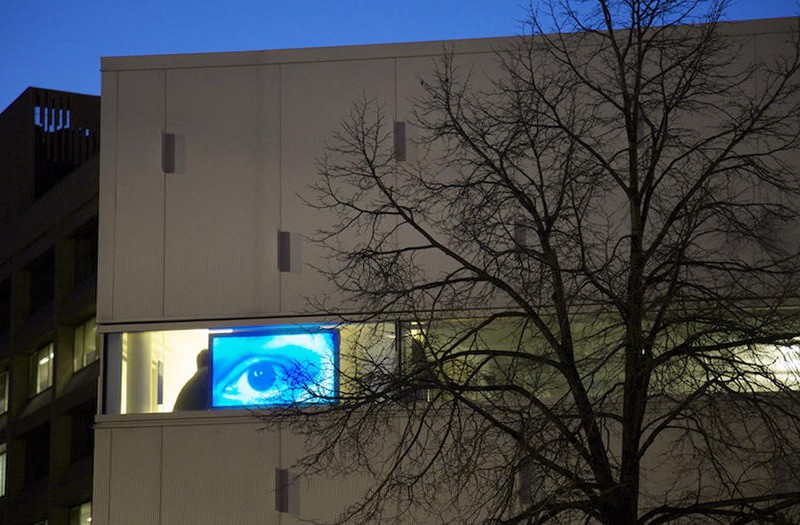
Donna Szoke
Artist
Database work: Szoke, Donna and Ricarda McDonald, And all watched over by machines of loving grace, 2012. Interactive video installation involving computer, software, large monitors and a sensor.
Szoke is a Canadian media artist whose practice includes video, animation, writing, installation, and collaboration. Her work has shown in Canada, US, France, Germany, Hungary, Croatia and Turkey. Her work exhibits in public art, interactive video installation, outdoor site-specific video installation, film festivals, theatre and dance. She has received numerous research awards and grants for her work, including SSHRC, BCAC, OAC and Canada Council for the Arts. She holds a BA, BFA and MFA and is currently a Visiting Artist / Assistant Professor at Brock University in the Marilyn I. Walker School of Fine and Performing Arts.
Website:
http://donnaszoke.com/ 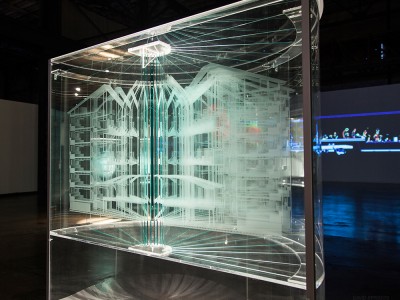
The Logic of Control
Artwork | David Spriggs, 2014.
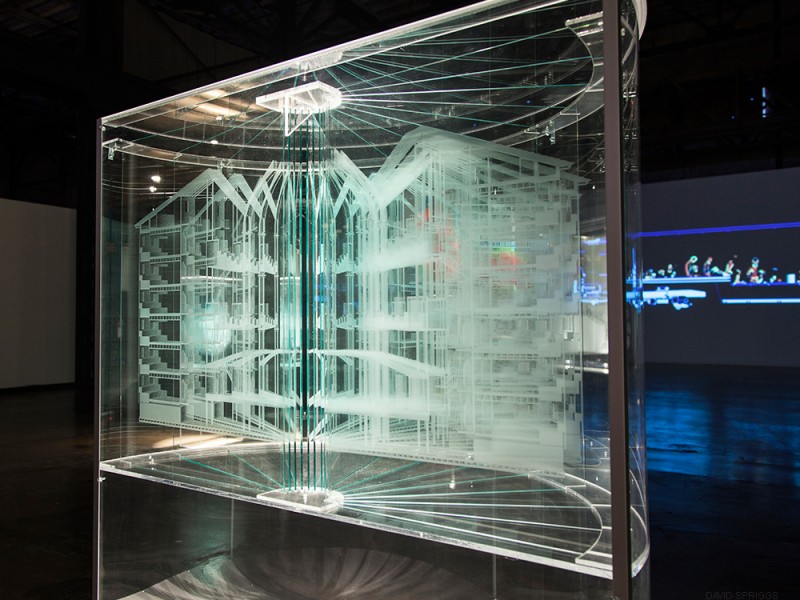
The Logic of Control
Artwork | David Spriggs, 2014.
Layered engraved glass sheets in half column display case | Exhibited in Sprigg's solo show PRISM at Arsenal Montreal
In Logic of Control, artist David Spriggs explores the architectural and conceptual design of the Panopticon in order to question the politics of seeing and being seen, and the structures of power that govern them. The Panopticon was originally designed by Jeremy Bentham as an eighteenth-century prison structure that enabled one prison guard in the centre to oversee, but be unseen by, many prisoners located around the periphery. Philosophy Michel Foucault later developed this design as a conceptual model to understand the power dynamics inherent to a control society, one where those in power can the capacity to watch, control, and regulate. Spriggs’s Logic of Control builds on these ideas, thinking through notions of access, viewing, and transparency central to contemporary projects of surveillance. From the artist’s website: “Transparency is a seductive aesthetic concept that suggests democracy. The use of transparency (glass) in state architecture, most notably in political buildings such as the Bundestag in Berlin, is often used as a means to suggests a more open and democratic government and therefore society. Spriggs’s artwork, The Logic of Control, is a completely transparent architecture of imagery. In this work sheets of etched glass create a half-column by fanning out from a central pivot point. Each sheet is engraved with a profile cross-section of a building, which alone are abstract. Through the artist’s positioning of the sheets in a semi-circular manner they come together to create the form of, and refer to, the well known surveillance apparatus – the Panopticon.”
Website:
http://www.davidspriggs.com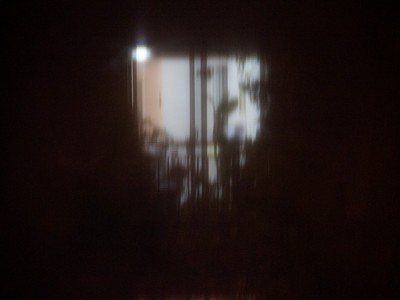
Invisible Performance No. 29: To spy on someone or something from one’s window
Artwork | Steve Giasson, 2015-2016.
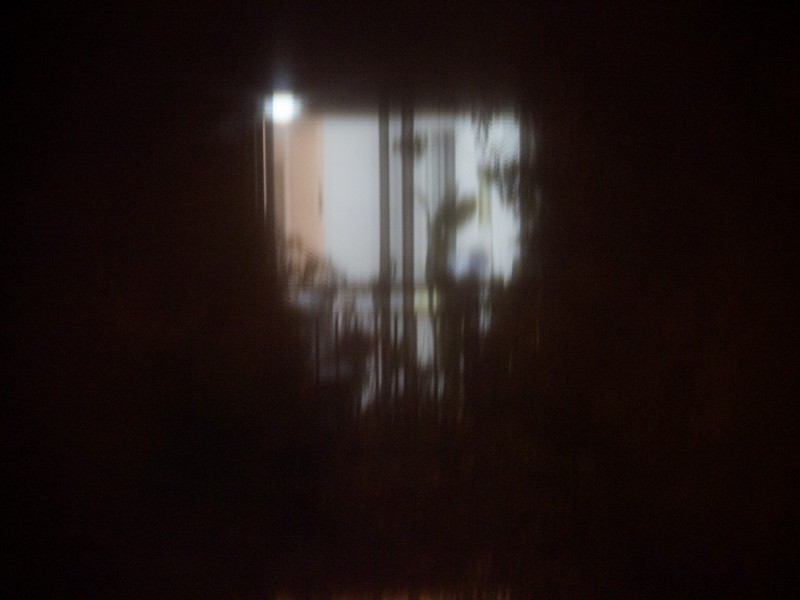
Invisible Performance No. 29: To spy on someone or something from one’s window
Artwork | Steve Giasson, 2015-2016.
Photographs and video| Exhibited in the "Micro Interventions in public space" section from the DARE-DARE Center of Dissemination of Multidisciplinary Art, Montreal.
From 07 July 2015 to 07 July 2016, Montreal-based artist Steve Giasson tasked himself with creating no less than 130 performances. Numbered consecutively, each of these completed performances, in Giasson’s own words, “will first take the form of performative statements: this is, ideas of works, recorded in writing which, although they can stand on their own, they call and describe so many minimal or enigmatic gestures - often taken from everyday life or the History of Art - which could be placed in the public space or private space.” Invisible Performance No. 29: To spy on someone or something from one’s window addressing the performative gesture of seeing and being seen within the space of the city. Referencing other works, such as Alfred Hitchcock’s Rear Window (1954), Michael Snow’s Souffle solaire (2005) and Chantal Akerman’s movie Là-bas (2006), this piece uses the angle of the surveillant gaze looking surreptitiously through a window frame to track and record movement and activities. The piece highlights an ambiguity to this form of looking: as a viewer we first ask whether the captured images are performed, staged, or not, which then provokes a second questions as to what these differences would provide to the interpretation to the piece. So too it juxtaposes modes of everyday looking, with the conscious and active capture of images of people and activities through increased surveillance structures within public—and private—spaces. The series Invisible Performances was realized as part of the 'Micro Interventions in public space' section from the DARE-DARE Center of Dissemination of Multidisciplinary Art, Montreal.
Website:
http://www.stevegiasson.com/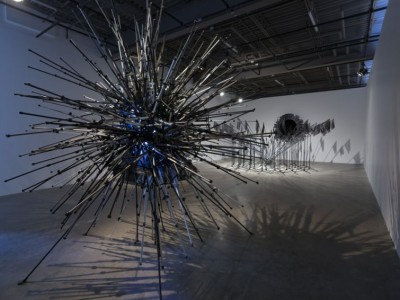
Michael A. Robinson
Artist
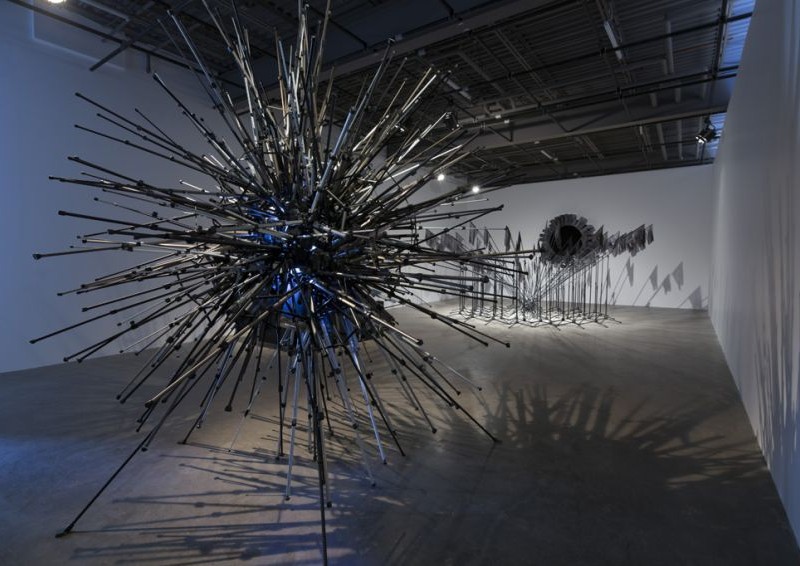
Michael A. Robinson
Artist
Database work: Robinson, Michael A. Subject to Scrutiny. 2013. Camcorders, cameras, tripods.
Born in Germany, Michael A. Robinson currently lives in Montreal, where he is an artist and educator in visual and media arts at l’Université du Québec à Montréal. Drawing upon multidisciplinary praxis in his sculptural installations, he, in his own words, “examines the creative gesture, its conditions of emergence, and the position of the artist in face of art world conventions.” Robinson has exhibited throughout Canada and France, and his work is included in numerous permanent collections, including the Museé d'art contemporarin de Montréal, the Musée nationale des beaux-arts du Québec, and the Canada Council Art Bank.
Website:
http://www.michaelarobinson.org/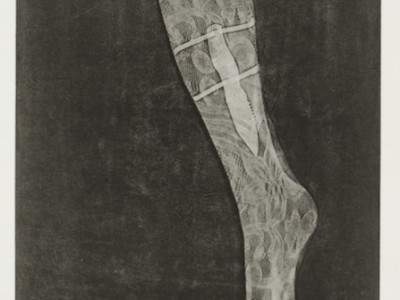
Kate McQuillen
Artist
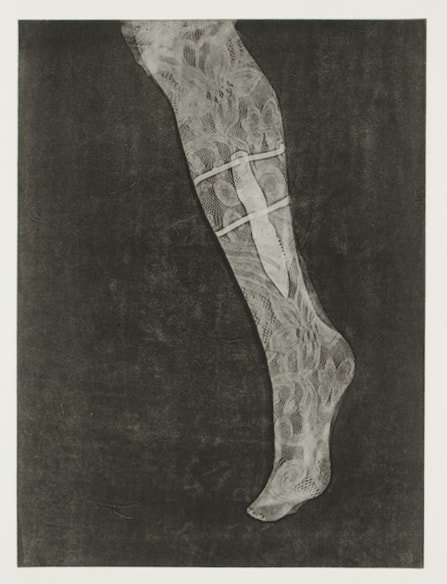
Kate McQuillen
Artist
Database work: McQuillen, Kate. X-rays Series. 2013. Pressure Monoprint on Rives BFK, 30" x 22." Photo documentation by Stephen DeSantis.
Kate McQuillen lives and works in Chicago. Earning her MFA from York University in Toronto, she works primarily in print media, drawing, and installation-based projects. She has exhibited her creative projects in a variety of national and international venues, including Utah Museum of Contemporary Art (Salt Lake City), the Terrain Biennial (Various locales), O’Born Contemporary (Toronto), and The Comfort Station (Chicago).
Website:
http://www.katemcquillen.com/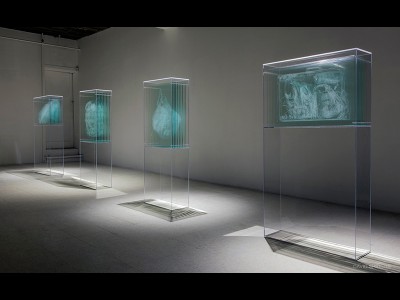
Transparency Report
Artwork | David Spriggs, 2014.
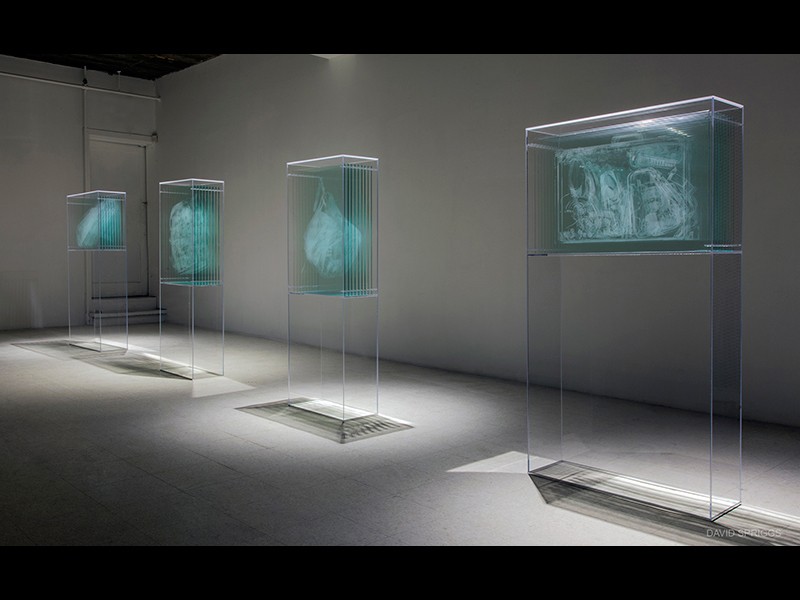
Transparency Report
Artwork | David Spriggs, 2014.
Engravings on 9 sheets of tempered glass layered and spaced in transparent plexi-glass display units |
David Spriggs’ Transparency Report is a series of engravings on transparent glass, layered upright to create a three-dimensional form. The engravings depict images of the internal space of various bags through an angle of vision that is reminiscent of airport security x-ray scans used to examine baggage for potentially dangerous contents. On Spriggs’ website, he describes how the series addresses issues of surveillance: “Transparency is undoubtedly a tool for control; it is rarely consensual and is most often imposed.” Using transparency as both a conceptual gesture and creative technique, the four representations that compose Spriggs’ Transparency Report forces gallery visitors to question boarder issues of visibility, access, and control, and how transparency is central to the overwhelming dominance of institutional power in and over our lives.
Website:
http://www.davidspriggs.com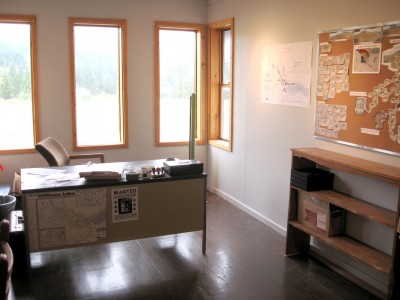
Edwin Janzen
Artist
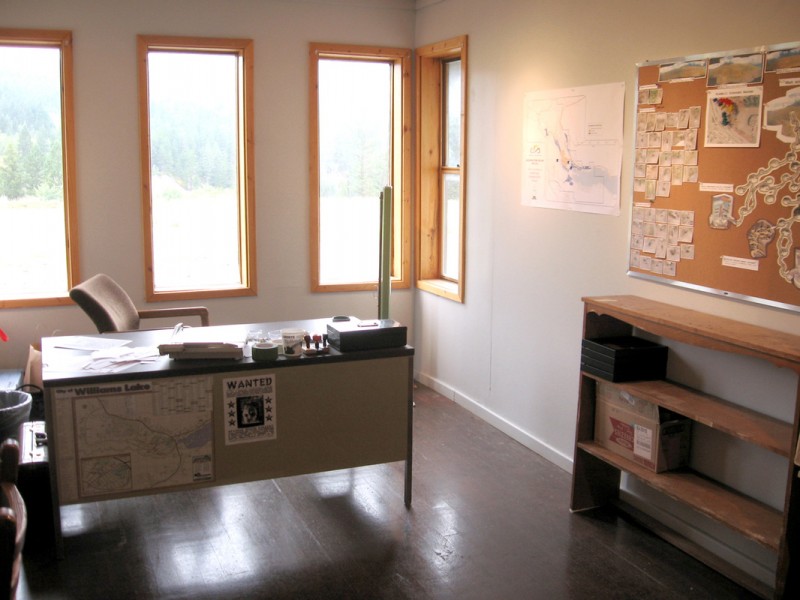
Edwin Janzen
Artist
Database works: Janzen, Edwin. Conspiracy Case. 2012. Performance/installation (photographs, looped videos, drawings, office furnishings, TV sets). // Janzen, Edwin. New Masters. 2015. Vinyl cut-outs, installation on staircases.
Originally from Winnipeg, Edwin Janzen currently resides in Montreal, Quebec where he works as a digital media and installation artist. Janzen describes his art practice as examining “how human character and knowledge are shaped in climates of suspicion and uncertainty, with society languishing in the grip of irresolvable ideological fantasies and insufficiently critical technology fetishes.” He received his BFA in Interdisciplinary Studies/Video from Concordia University in 20080 and his MFA from the University of Ottawa in 2010.
Website:
http://www.edwinjanzen.com/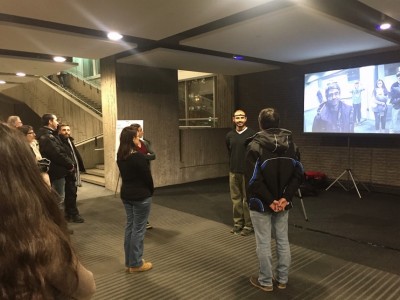
Eric Forman
Artist
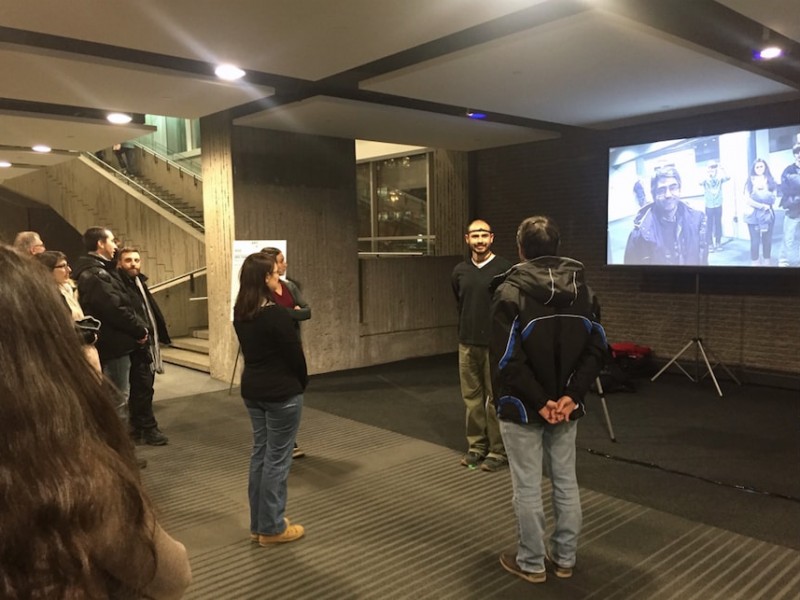
Eric Forman
Artist
Database work: Forman, Eric. Auto-surveillance Encounter. 2004 and 2015. Miniature surveillance camera, video projector. Timed performance. Variable dimensions.
Eric Forman is a Brooklyn-based artist working with interactive installations and responsive sculptures. With his work, he aims to develop creative projects that blur and push the boundaries between art, design, performance, architecture, technology, and science. Forman received his BA in 1995 from Vassar College and his MFA in 2002 from the Tisch School of Arts. He is the co-founder of BioArt New York, a collective pairing artists and biologists for unusual collaborations, and currently a faculty member in the Interactive Design MFA program at the School of Visual Arts in New York City.
Website:
http://www.ericforman.com/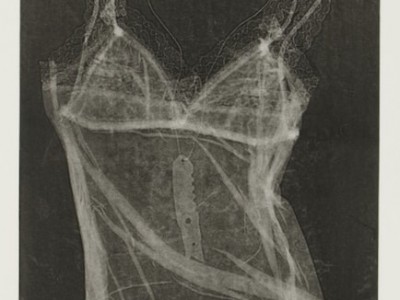
X-Rays Series
Artwork | Kate McQuillen, 2013.
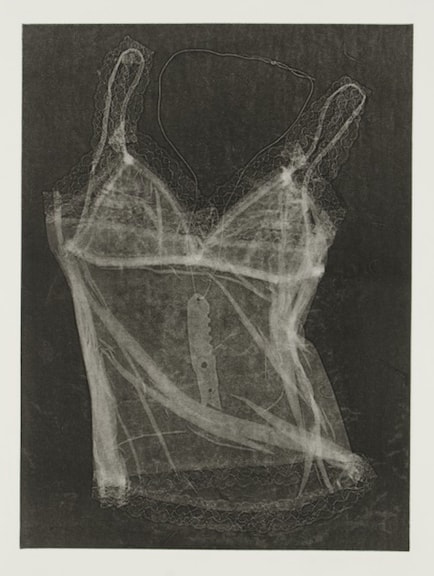
X-Rays Series
Artwork | Kate McQuillen, 2013.
Pressure Monoprint on Rives BFK, 30" x 22" | Solo exhibition of her work, “Backscatter (an exploration of surveillance in the wake of 9-11)” at the O’Born Contemporary Gallery in Toronto, Ontario (2013).
Kate McQuillen’s monoprint series X-Rays features scanned prints, reminiscent of security body scans, of various feminine undergarments concealing what appears to be weapons as depicted in Boxcutter III. However, despite their appearance, in actuality the weapons embedded within the images are harmless paper cut-outs. McQuillen addresses how security procedures, such as body scans, can often yield misleading results and leave innocent citizens feeling as through they are being treated like suspects. As well, the feminine lingerie garments allude to the often invasive nature of surveillance tactics and the intimate look the government has into people’s private lives. This series of work was included in McQuillen’s solo exhibition “Backscatter (an exploration of surveillance in the wake of 9-11)” at the O’Born Contemporary Gallery in Toronto, Ontario (2013).
Website:
http://www.katemcquillen.com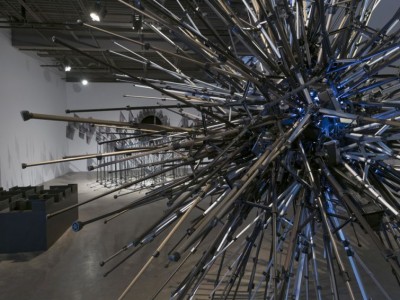
Subject to Scrutiny
Artwork | Michael A. Robinson, 2013.
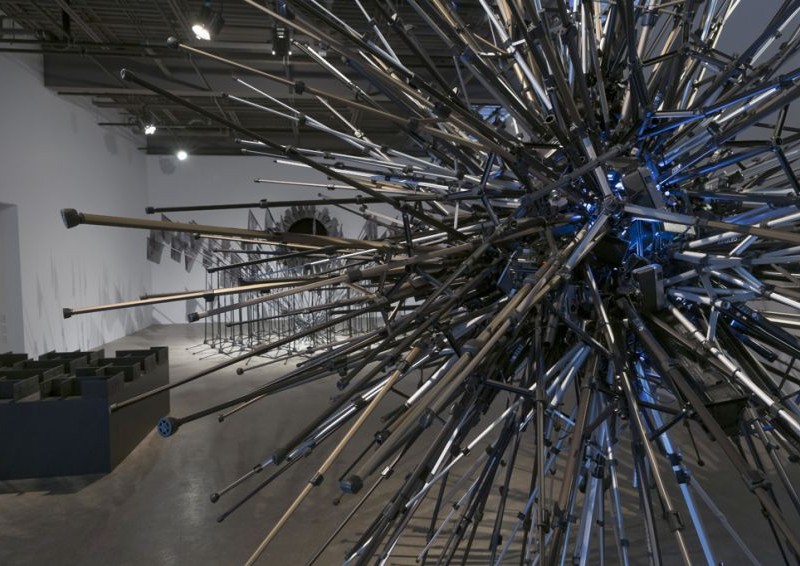
Subject to Scrutiny
Artwork | Michael A. Robinson, 2013.
Camcorders, cameras, tripods | Exhibited as part of the “Art Souterrain” Festival in Montreal (2015)
Subject to Scrutiny, by Montreal-based artist Michael A. Robinson, is an installation sculpture constructed of over 100 cameras on tripods. The composition is such that the cameras are set to capture every angle and space within the gallery. The tripods stick outward to create a large spherical structure that takes on a life of its own. As the visitor moves around the installation, the cameras activate, causing a flurry of flashes and sounds of camera shutters that overwhelm the small space. The installation provokes an intensified or magnified sense of what it feels to be under the scrutiny of the surveillant gaze; the sounds, lights, and activity creating a sensory overload and affective response in the body of visitors. This project was included as part of Robinson’s larger installation series, entitled Black Period, which was included in Montreal’s Contemporary Arts Festival “Art Souterrain” in 2015.
Website:
http://www.michaelarobinson.org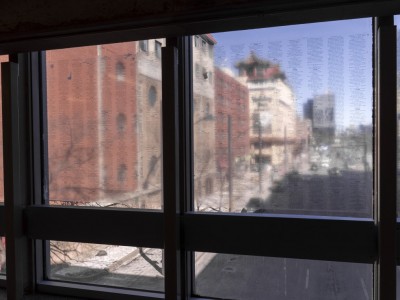
VOX
Artwork | Steve Giasson, 2015 and 2016.
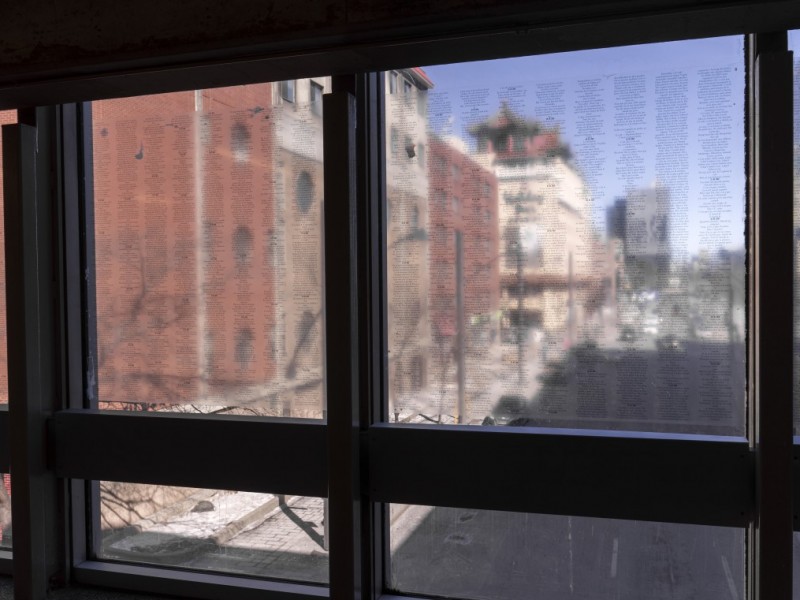
VOX
Artwork | Steve Giasson, 2015 and 2016.
Mixed media. Variable dimensions | Exhibited at Palais des congrès as part of the Montreal's “Art Souterrain” Festival (2015), and at the 2-22 Building in Montreal (2016).
In VOX, artist Steve Giasson displays 200 pages of transcribed text he recorded from overheard conversations occurring outside his apartment over the course of a year, from 25 July 25 2009 to 24 July 24 2010. The work was featured in the Palais des congrès in Montreal for the Festival “Art Souterrain” in 2015, under the theme “Security in our Society: What Remains of our Personal Freedoms?” The work was exhibited again in Montreal at the 2-22 Building from 09 August to 09 October 2016. In the press release for the festival, the work is described as “the product of a drastic and performative surveillance by the artist of the environment he lives in and the voices that fill it. Graphically reproducing his collection into a sound wave, this text can be read as a portrait of its contemporaries while also being a self-portrait.” To be sure, this work is also a portrait of contemporary life, a historical moment that challenges social conceptions and expectations of private lives and public access. So too, Giasson’s VOX questions what aspects of a surveilled moment gets lost within its capture; the flat form of the spoken-to-written word offers no context, tones, colour, or character that comes with lived experience. As such, the piece also asks what is lost in the translation toward the surveillance form.
Website:
http://www.stevegiasson.com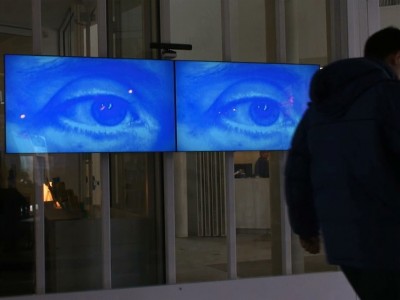
Ricarda McDonald
Artist
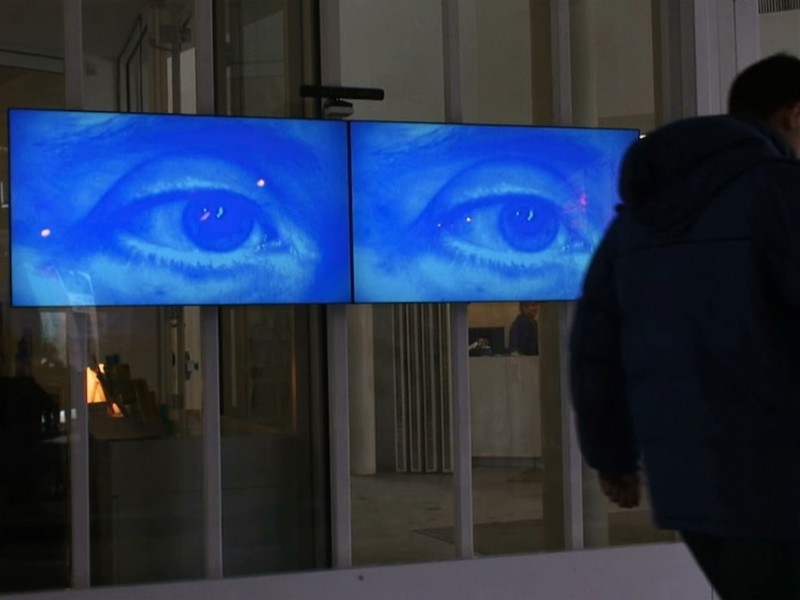
Ricarda McDonald
Artist
Database work: Szoke, Donna and Ricarda McDonald, And all watched over by machines of loving grace, 2012. Interactive video installation involving computer, software, large monitors and a sensor.
Ricarda McDonald is a Canadian artist whose practice includes computer-manipulated photography, video, sound, light and computer mediated installations and collaboration. In 2011, McDonald built a theremin and became one of the founding members of the Vancouver Experimental Theremin Orchestra (VETO). VETO performed at Xenakis: Vancouver New Music Festival 2011 and at the Interactive Futures’11: Animal Influence Conference held at ECUAD. She holds a BFA from the Emily Carr University of Art + Design, a BMATH from the University of Waterloo and is a graduate of the National Ballet School of Canada.
Website:
you can see some of her work on vimeo, https://vimeo.com/ricardamcdonald 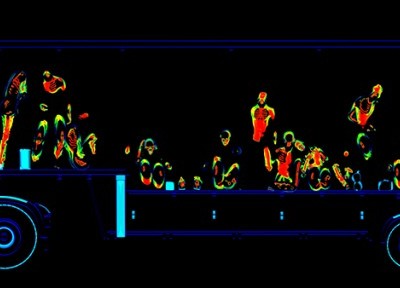
The Visible Spectrum
Artwork | David Spriggs, 2015.
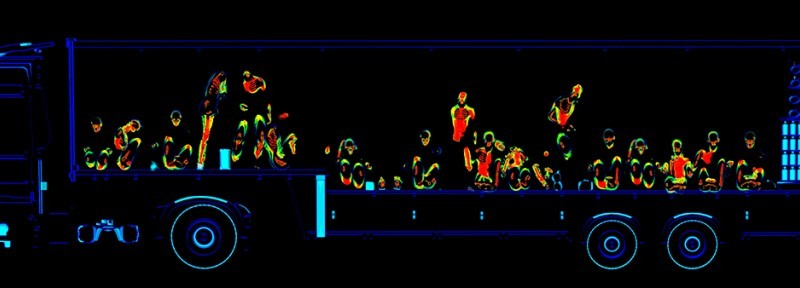
The Visible Spectrum
Artwork | David Spriggs, 2015.
Digital video projection installation on a 4 minute loop | Arsenal Montreal for Spriggs’s solo exhibition PRISM (2015), which also included his works Transparency Report and The Logic of Control.
This piece by artist David Spriggs explores the possibilities and limitations to human vision. The title, Visible Spectrum refers to the portion of electromagnetic waves that are capable of being detected by the human eye, and highlights the extensions of these capabilities through the use of surveillance technologies. The piece asks the viewer to question the relationship between that which is visible in contrast to that which is unseen. The work depicts a scale projection of truck with 100 life-size figures in the trailer. The video animation utilizes layering methods present in Sprigg’s other works, and scans the length of the truck to pay attention to each of the different figures. In the artist’s own words: “The animation presents a reimagined vision of a semi-truck and trailer under X-ray in a way that is not possible with the existing technology that only provides very low-quality imagery on a single plane. Influenced by the electromagnetic spectrum the people inside the trailer are depicted in a manner reminiscent of a combination of CT scans, MRIs, and thermal images. In this artwork, technology and the human body are placed in opposition to one another. The semi-truck is represented in a very cool, dark blue while inside the trailer the viewer witnesses an ever-changing dance of forms that becomes hypnotic, like a symphony of colours that expands and contracts.” This work re-visualizes the expectations of surveillant looking, and connects it with other issues concerning border controls, immigration, smuggling, and collective securities vs. individual privacy and civil liberties. This work first premiered at Arsenal Montreal for Spriggs’s solo exhibition PRISM, which also included his works Transparency Report and The Logic of Control.
Website:
http://www.davidspriggs.com/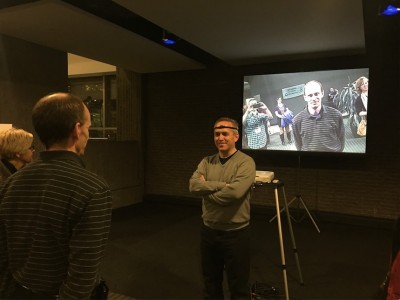
Auto-surveillance Encounter
Artwork | Eric Forman, 2004 and 2015.
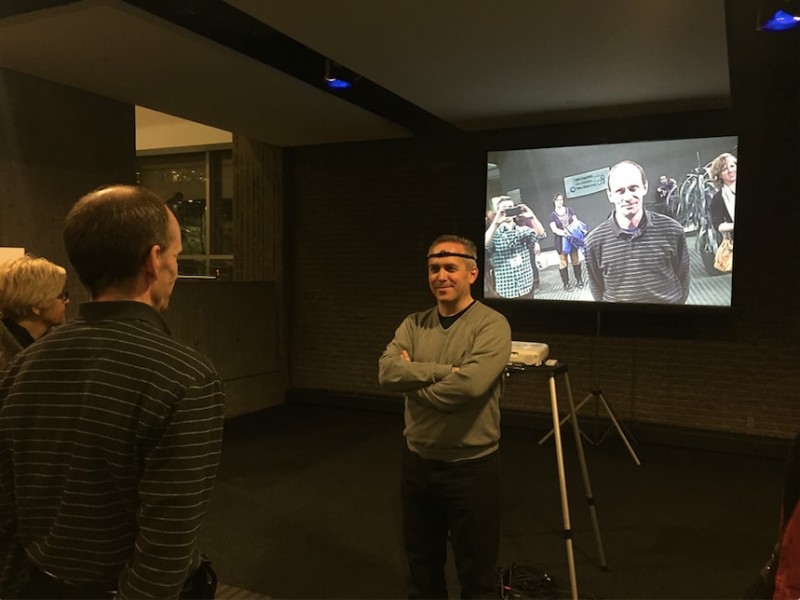
Auto-surveillance Encounter
Artwork | Eric Forman, 2004 and 2015.
Miniature surveillance camera, video projector. Timed performance. Variable dimensions | Various locations, including Hostel Haus Salon in Brooklyn, New York (2004) and “Art Souterrain” Festival in Montreal (2015)
New York-based artist Eric Forman’s performance piece Auto-surveillance Encounter was first mounted in 2004 at the Hostel Haus Salon in Brooklyn, New York and later in Canada at the 2015 “Art Souterrain” Festival in Montreal. In the performance, Forman allows participants to experience multiple vantage points as the viewed, viewer, and voyeur. The artist invites one audience member (the viewer) to strap on a micro-camera to their forehead and stare into the eyes of each audience member (the viewed) for one minute intervals while TV monitors behind the viewer capture their viewpoint. The other audience members are free to look where they please (the voyeurs); they can gaze at the screen capturing the interaction through the eyes of the viewer, directly at the two participants staring at one another, or amongst other audience members. Participants rotate through each role to understand the diverse perspectives and experiences of surveillance. The press release for “Art Souterrain” explains Forman’s piece as provoking the experience of the everyday surveillances in new and unfamiliar ways: “the nature of this spectacle, even when simultaneous, makes interaction seem hyper-real. Yet only the viewer and the current participant are experiencing direct, personal contact. The onset and fade of self-consciousness is broadcasted for all to see. Each interval becomes a subversive meditative exercise in genuine, non-mediated, communication.”
Website:
http://www.ericforman.com/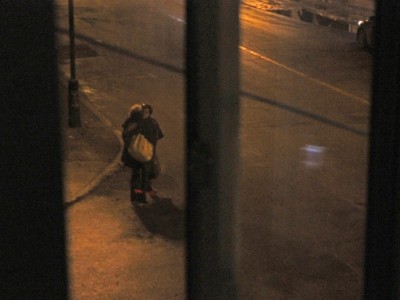
Steve Giasson
Artist
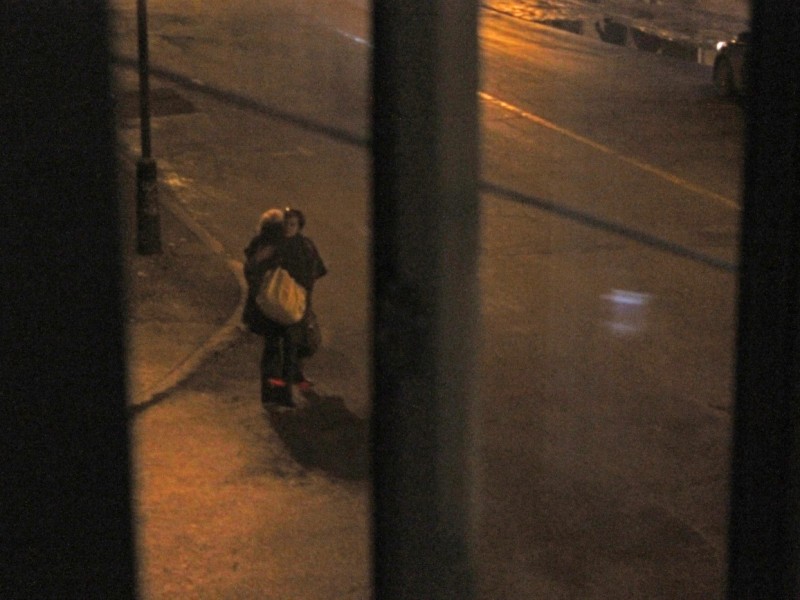
Steve Giasson
Artist
Giasson, Steve. Invisible Performance No. 29: To spy on someone or something from one’s window. 2016. Photographs and video. // Giasson, Steve. VOX. 2015 and 2016. Mixed media. Variable dimensions.
Steve Giasson is a Montreal-based artist whose creative practice spans a range of mediums, including conceptual writing, art performance, photography, video, and installation. His work has been exhibited widely, both nationally and internationally, and in prominent festivals including the Liverpool Biennial 2012, and the Text Festival 2011 and 2014 (Manchester). Currently, Giasson is completely his PhD in Études et practiques des arts at l’Université du Québec à Montréal.
Website:
http://www.stevegiasson.com/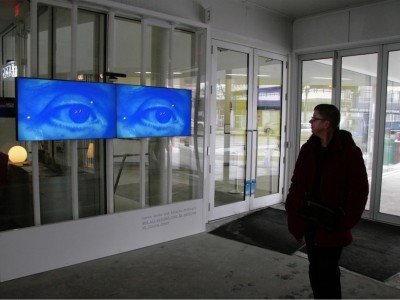
and all are watched over by machines of loving grace
Artwork | Donna Szoke and Ricarda McDonald, 2012.
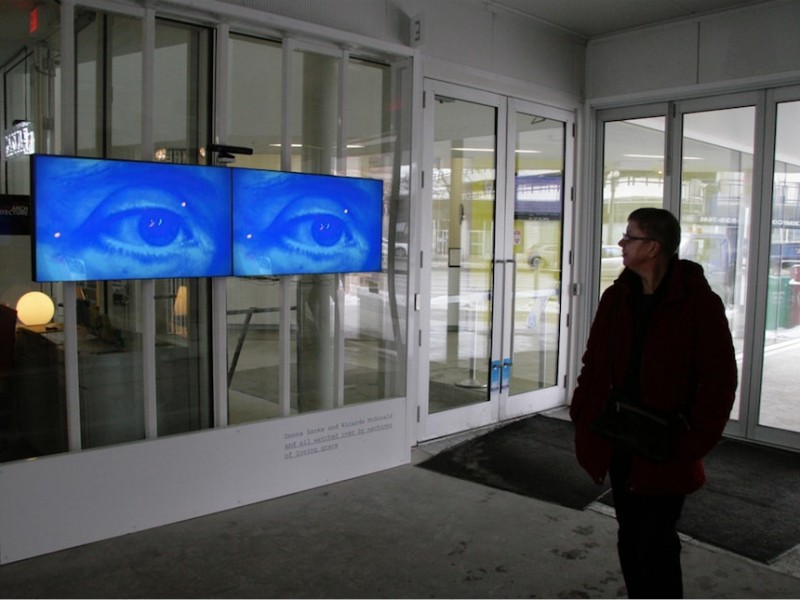
and all are watched over by machines of loving grace
Artwork | Donna Szoke and Ricarda McDonald, 2012.
Interactive video installation involving computer, software, large monitors and a sensor | Various locations
And all watched over by machines of loving grace plays with the expectations of bodies, looking, and technology. Two large monitors, each displaying a disembodied eye, stare out at the audience. As an audience member walks past, the eyes look at them and follow their movement. Forcing the connection between the eye of the camera and the eye of the human, this piece questions the presumed objectivity of the technologies of surveillance and the inherent subjectivities of those who (often invisibly) control and interpret them. To further draw out these parallels, a video in an adjacent area plays a continuous loop of an extreme close-up of an eye that blinks in slow motion. According to Szoke and MacDonald, the installation “emphasizes the human element of surveillance—a blink—that implies an inherent failure compared to machine surveillance.” The artists take the title of the piece from a 1967 Richard Brautigan poem, which articulates a vision of a loving and caring gaze of humanity, as a critique of the current state of surveillance that the artists see as being centrally concerned with crime and consumerism. This piece has been included in a variety of exhibitions, including at Centre 3, Hamilton, ON, (Sept 6 to Oct 19, 2013); "Cyber Insecurities" at Pepco Edison Place Gallery, Washington, D.C. (Aug 30 to Sept 27, 2013); Nuit Blanche/Art Souterrain, Montreal, (March 2-17, 2013); and CRAM International, St. Catharines, ON (April 27 to May 22, 2012). You can access video of the piece at https://vimeo.com/36306074.
Website:
You can find more information about Donna Szoke on her website, http://donnaszoke.com/. More video works by Ricarda McDonald are available at https://vimeo.com/ricardamcdonald.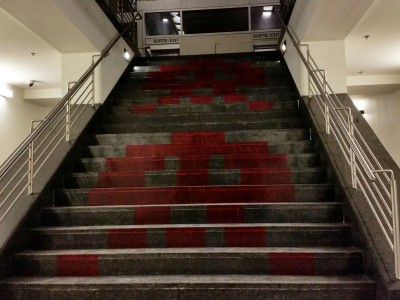
New Masters
Artwork | Edwin Janzen, 2015.
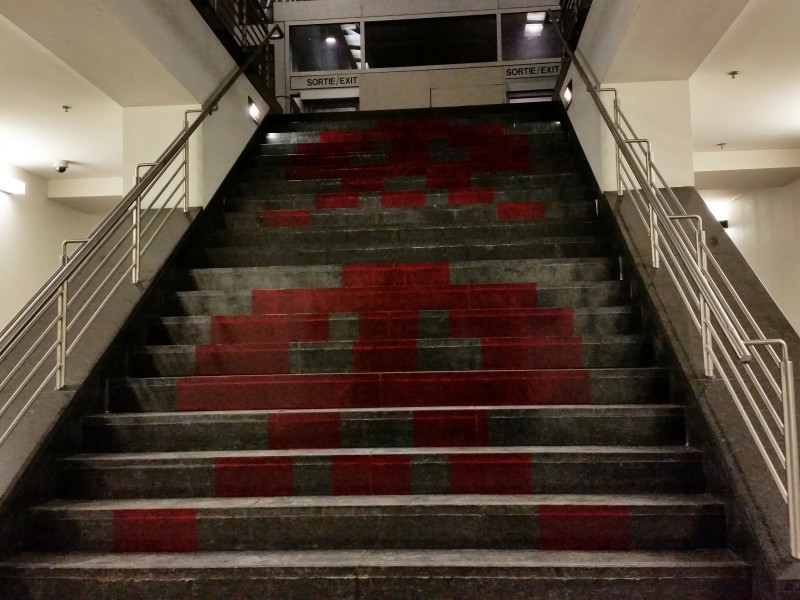
New Masters
Artwork | Edwin Janzen, 2015.
Vinyl cut-outs, installation on staircases | Exhibited as part of Montreal’s 2015“Art Souterrain” Festival, which was themed “Security in our Society: What Remains of our Personal Freedoms?”
Edwin Janzen’s installation New Masters features vinyl cuts-outs applied to staircases of pixelated alien faces of characters from the popular 1980s video game Space Invaders. In the game, these aliens were meant to represent the threat of nuclear attack, a lived and real concern during this time of Cold War tensions. In this piece, Janzen creates a parallel between these historical fears of nuclear war and contemporary fears of terrorism. The representations of menacing aliens are a reminder of what Janzen describes as “the formidable hierarchies of power stacked about them and how the sense of alien menace is deployed in the service of such powers. While we strive and struggle, the edifice of a security state is quietly built up around us.” The piece was installed in two underground staircase locations at Place-Ville-Marie and Place de la Cité Internationale as part of Montreal’s 2015“Art Souterrain” Festival, which was themed “Security in our Society: What Remains of our Personal Freedoms?”
Website:
http://www.edwinjanzen.com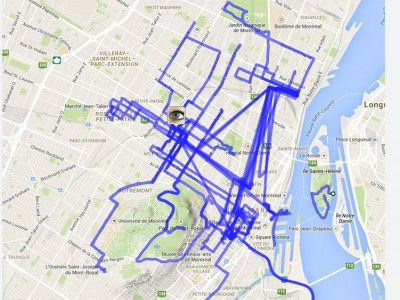
Eva Clouard
Artist
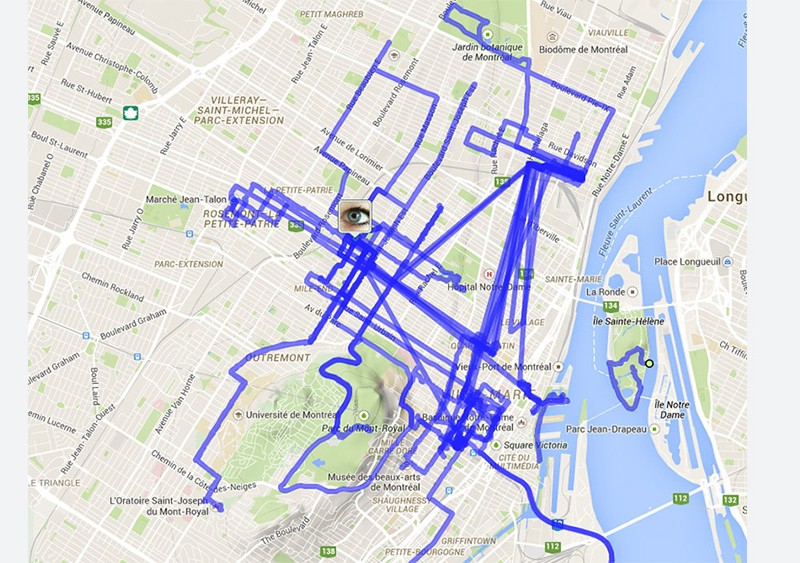
Eva Clouard
Artist
Database works: Clouard, Eva. Mont-reel. 2015. Digital installation, Geolocation app, smartphone. Variable dimensions.
Eva Clouard is a young French artist who graduated from l’école supérieure d’art et de design du Havre and l’École Nationale Supérieure des Arts Décoratifs. Much of her creative practice is dedicated to reappropriating and subverting objects of common use, to new and surprising ends. She has exhibited her work throughout France, and has several exhibitions in the international context, including Montreal, Canada.
Website:
http://www.evaclouard.com/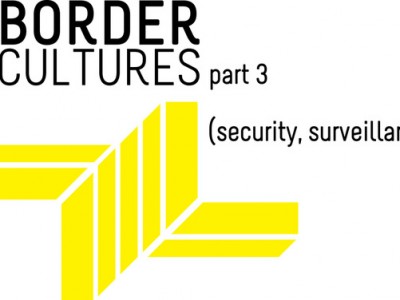
Border Cultures: Part Three (security, surveillance)
Exhibition | 2015
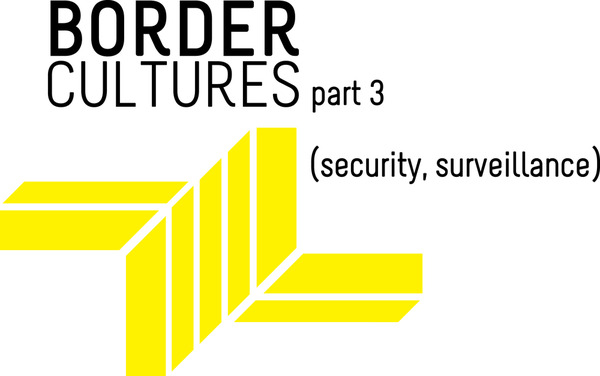
Border Cultures: Part Three (security, surveillance)
Exhibition | 2015
Final exhibition in a three part series | Art Gallery of Windsor, Windsor, ON.
This exhibition was organized by and mounted at the Art Gallery of Windsor from 31 January to 10 May 2015. The final exhibition in a three-part series, Border Cultures: Part Three (security, surveillance) was a group exhibition that, according to its press release, “examines the impact of heightened militarization along national boundaries that has intensified deportations, detentions and mechanisms of surveillance of migrants and foreigners.” The previous two exhibitions in this series focussed on homes, land (2013), and work, labour (2014). Taken together, the three displays were “conceptualized as a research platform, bringing together regional, national and international artists to examine the complex and shifting notions of national boundaries.”
Website:
http://www.agw.ca/exhibitions/upcoming/404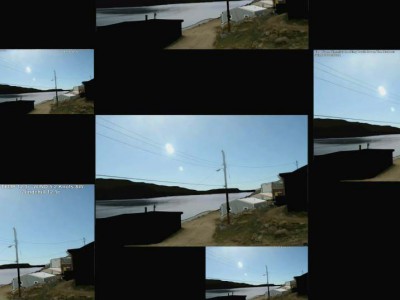
Meta Incognita: Summer Variations
Artwork | Pierre Tremblay, 2012.
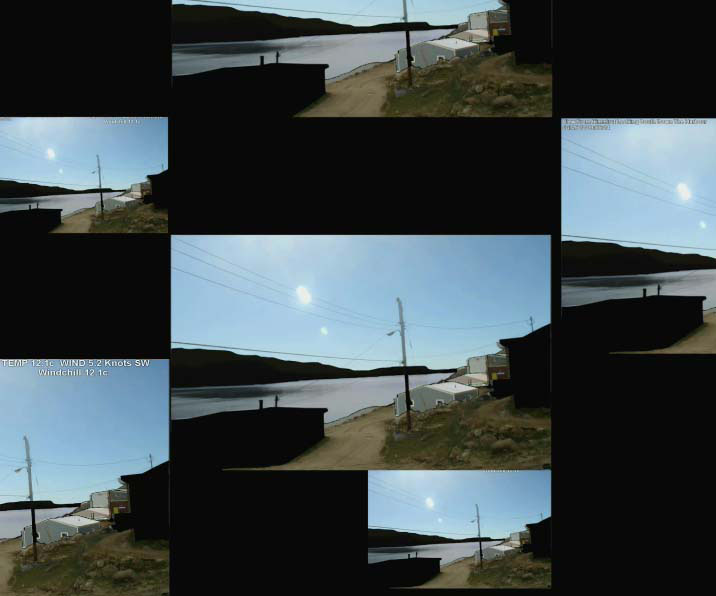
Meta Incognita: Summer Variations
Artwork | Pierre Tremblay, 2012.
Video installation | Exhibited at The Photographers' Gallery (London, UK), 14 Sept-10 Oct 2012.
Meta Incognita is a time-lapsed video that consists of over 500 images taken from a public weather webcam located in Kimmirut on Baffin Island. In the piece, Tremblay selects a variety of representations of the landscape captured automatically by the webcam, then recontextualizes them into a video cycle that gives motion and movement to the weather cycles of the images. Meta Incognita uses the weather webcam to question automated surveillance technologies in relation to time, landscape, and the documentary genre. The piece was exhibited by The Photographers' Gallery (London, UK) from 14 September - 10 October 2012.
This piece is part of a larger collaborative project entitled Nunavut Lights that explores representations and visualizations of the photographic archive. With artists David Bouchard and Bruno Lessard, and composer Alex Geddie, Tremblay has worked on other incarnations of the Meta Incognita project, including Meta Incognita—Variations Estivales (2011) and Meta Incognita: Summer Variations (2012). You can find more information about these pieces at the Nunavut Lights website, http://nunavutlights.com/.
Website:
you see more of his work at Nunavut Lights website, http://nunavutlights.com/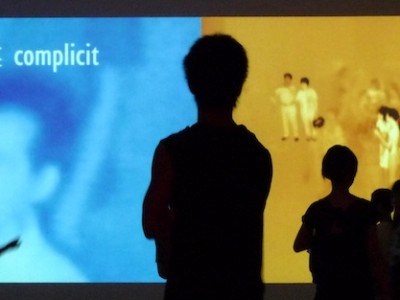
Taken
Artwork | David Rokeby, 2002-2009.
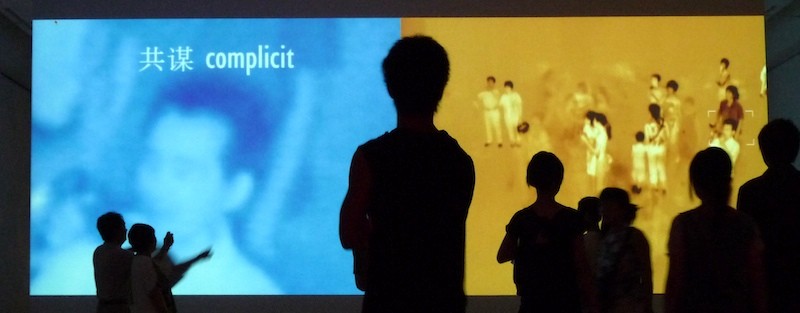
Taken
Artwork | David Rokeby, 2002-2009.
Video installation | In multiple exhibitions and locations, including Art Gallery of Hamilton, Hamilton, ON (2002); “Interaction '05,” Toronto International Art Fair, Toronto, ON (2005); “Profiling,” Whitney Museum of American Art, New York, NY (2007); “Synthetic Time,” National Art Museum of China, Beijing, China.
In Taken, Tokeby uses surveillance technologies to record and capture movement of people in the gallery space. Projected onto a large screen within the gallery, these individual images are brought together as one composite image, with the actions of each person looped at 20-second intervals. According to Rokeby, “The result is that every action that has taken place in the gallery since the computer was turned on occurs together on the screen, repeating every 20 seconds. The image stream, provides a kind of seething chaos of activity that can be read both as a statistical plot of gallery activities (where do most people stand to regard the piece? Do they move around?) and as a record of each act of each visitor. The image is densely social, deeply layered and chaotic. The other side is a cooler catalog of the gallery visitors. Individual visitors are tracked within the space. Their heads are zoomed in on, and adjectives are attributed to them (i.e. 'unsuspecting', 'complicit', 'hungry'). These individual head shots are collected as a set of the last 200 visitors and presented as a matrix of 100 or occasionally all 200 shots, moving in slow motion. This side is analytical and highly ordered and rather threatening.”
Website:
http://www.davidrokeby.com/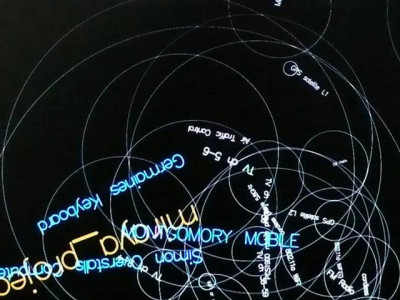
Ian Verchere
Artist
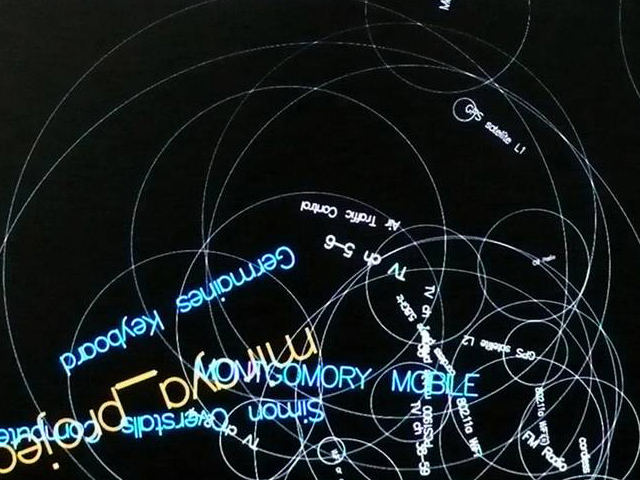
Ian Verchere
Artist
Database works: Koh, Germaine with Ian Verchere. Broken Arrow. 2008 and 2009 versions. Various exhibitions, including the group exhibition “Sorting Daemons: Art, Surveillance Regimes and Social Control,” Agnes Etherington Art Centre, Kingston, ON, 2009.
Website:
see the work at http://germainekoh.com/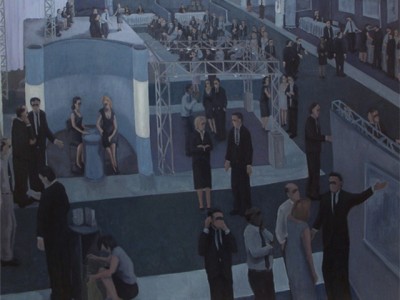
Some Will Take More Prodding, Others Will Be More Difficult
Artwork | Michael Lewis, 2008.
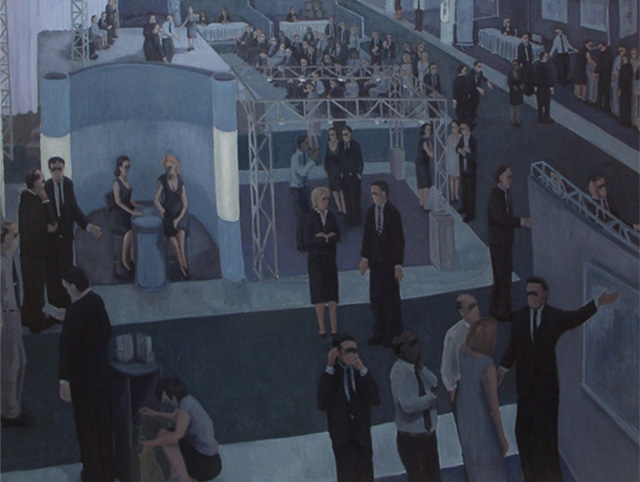
Some Will Take More Prodding, Others Will Be More Difficult
Artwork | Michael Lewis, 2008.
Oil on canvas | In the group exhibition “Sorting Daemons: Art, Surveillance Regimes and Social Control,” Agnes Etherington Art Centre, Kingston, ON, 2009.
In this painting, which is part of a larger series entitled I’ll Take Care of It, Lewis illustrates a conference-style, office gathering of people conversing and interacting with each other, depicted through the high perspective of a surveillance camera. This work highlights the tracking and surveying of the bodies who undertake the mundane tasks of everyday corporate life, but blacks out—censors—the eyes, thereby masking recognizable identities and individuality.
Website:
http://michaellewisartist.com/ 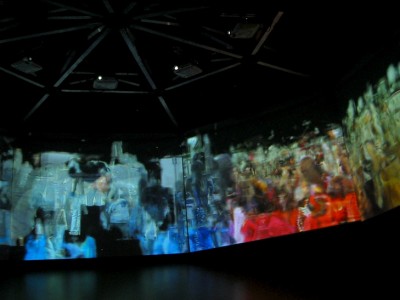
Gathering
Artwork | David Rokeby, 2004.
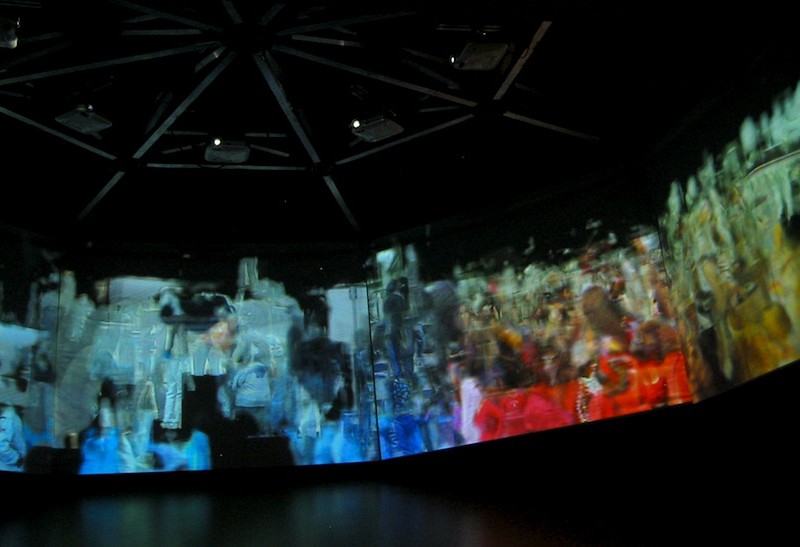
Gathering
Artwork | David Rokeby, 2004.
Video installation | Commissioned by the Art Gallery of Hamilton, Hamilton, ON for the São Paulo Bienal.
Commissioned by the Art Gallery of Hamilton, Gathering captures images of people outside the gallery space. A software programme detaches each person from their background, then organizes particular aspects (heads, t-shirts, jeans, coats, hands) by colour. The elements are recontextualized following one of an available three sets of rules that determines how the images are put back together. Inside the gallery space, the resulting composite images are displayed on a circle of 8 video projections. Similar to his piece Sorting Daemon (2003), Gathering questions the somewhat arbitrary nature that dictates the ways in which automated systems survey, record, and organize information.
Website:
http://www.davidrokeby.com/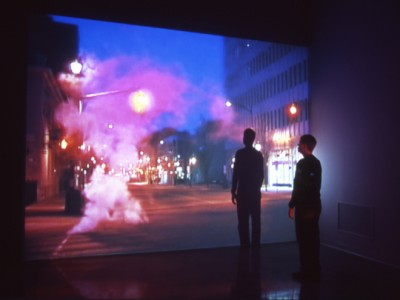
Interloper
Artwork | Kathleen Ritter, 2005.
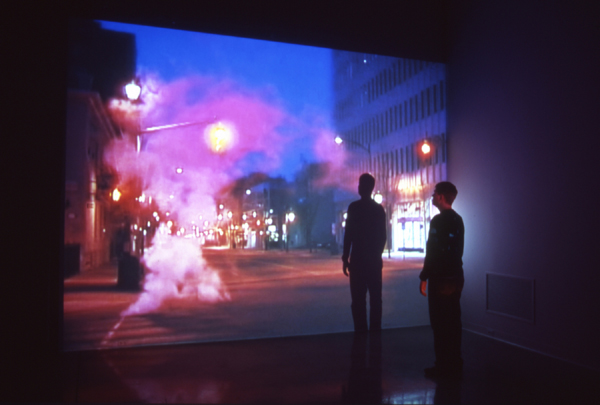
Interloper
Artwork | Kathleen Ritter, 2005.
4-channel video installation with sound, 100 performance scripts, photographs, map, map pins, cork board |
In her work Interloper, Ritter explores the relationship between collective behaviour, social surveillance, and public spaces. Over the course of a year, Ritter tracked her movements and behaviours in spaces designed for public use. As such, she noted when her movements became intentionally performative, which, according to Ritter, enabled her to “temporarily occupy a public space or transgressing public behaviour—activities which were transitory and performed for a limited and often unwitting audience.” Interloper records the spaces of such actions, although the actions themselves are absence from the piece. In this way, the piece questions the very notion of public, and addresses the ways in which the behaviour of the self functions in relation to it. As well, Ritter explores the possibilities of transmitting personal experiences to an audience through highlighting the limitations of documentation.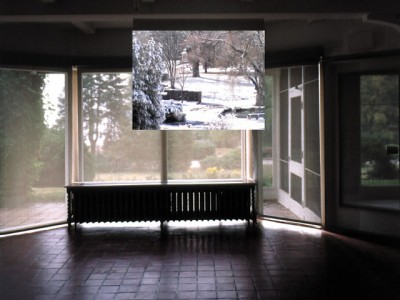
Machine For Taking Time
Artwork | David Rokeby, 2001.
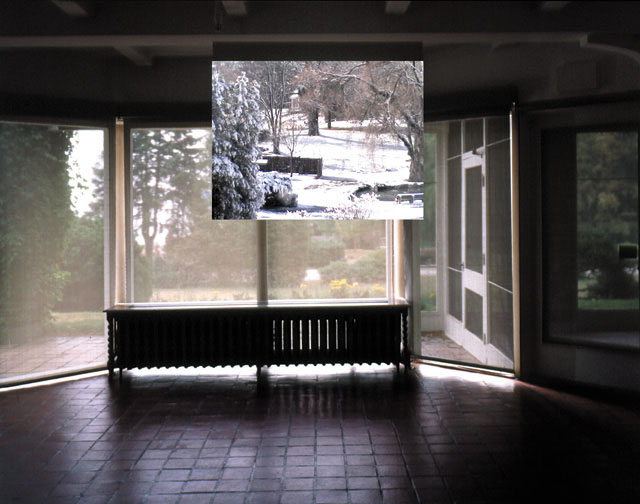
Machine For Taking Time
Artwork | David Rokeby, 2001.
Video projection, stored digital images, custom software | In multiple exhibitions, including “Early Delights/Deep Gardening,” curated by Su Ditta, Oakville Galleries, Oakville, ON.
Machine for Taking Time was commissioned by the Oakville Galleries for the show “Earthly Delights/Deep Gardening.” In the piece, Rokeby’s “machine” consists of a surveillance camera that takes 1081 still images of the gallery’s gardens along the same path daily. All of these images are archived, then stitched back together as a video that retains that same path, but uses images from different days. In the gallery, the video of the surveillance images is mounted next to a window overlooking the gardens, which juxtaposes the virtual and lived spaces. As its title suggests, this artwork highlights time not simply as an unfolding of chronological events or images, but rather, as a reconstruction of moments, memories, and illusions.
This piece is a site-specific work that Rokeby recreated in several different locations. He also developed a newer incarnation of the piece, Machine for Taking Time (Boul. Saint-Laurent) (2006-2007), commissioned by Daniel Langlois Foundation. More information on this latter piece can be found on the foundation’s website, http://www.fondation-langlois.org/e-art/e/machine-for-taking-time.html.
Website:
http://www.davidrokeby.com/ 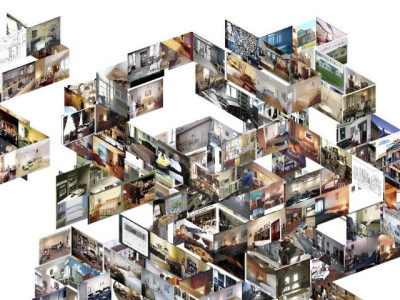
Stéphane Degoutin
Artist
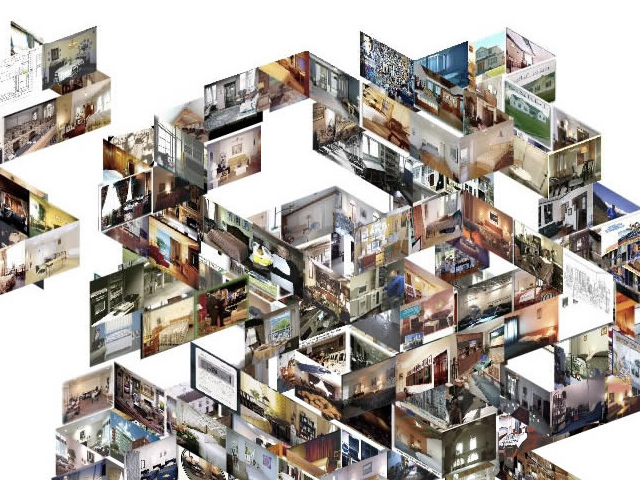
Stéphane Degoutin
Artist
Database works: Dermineur, Marika and Stéphane Degoutin. Google House, 2003-ongoing. Interactive online installation.
Born in Toronto, Degoutin is an artist, writer, and researcher currently based in Paris where he teaches at École des Arts Décoratif (ENSAD). With collaborator Gwenola Wagon, he has created a number of online works, including Terrorism Museum in an Airport (2009-2013, http://www.nogovoyages.com/terrorism_museum.html), and Dance Party in Iraq (2012-2013, http://www.nogovoyages.com/dpi.html). He is also the author of the book Prisonniers volontaires du rêve américain (Voluntary Prisoners of the American Dream), Editions de la Villette, Paris, 2006.
Website:
http://www.nogoland.com/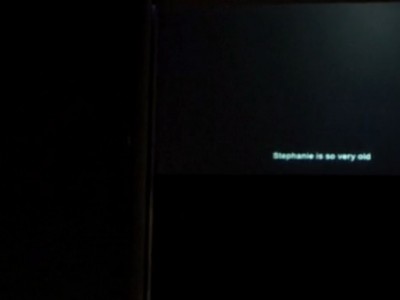
You Saw Me?
Artwork | Melanie Lowe, 2008.
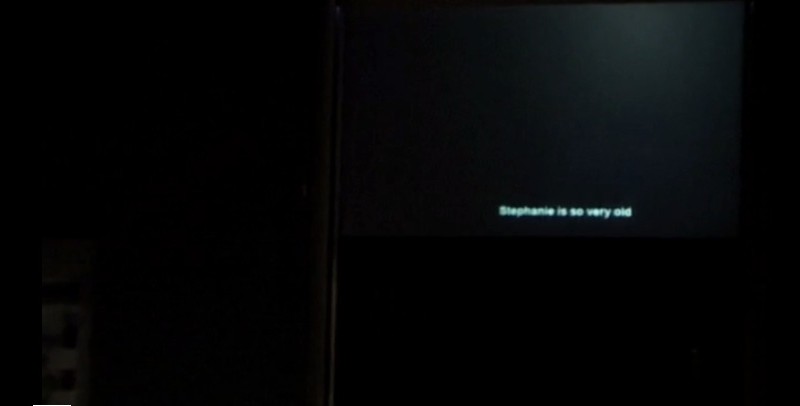
You Saw Me?
Artwork | Melanie Lowe, 2008.
New media database projection | In the exhibition, “Cake on the Icing,” curated by Shaun Dacey, InterAccess Electronic Media Arts Centre, Toronto.
In You Saw Me?, Lowe addresses the contemporary nature of personal relations mediated by social media and technology such as Facebook. In particular, the work explores the ways in which the personal self is constructed through the public performance of posting thoughts, events, and photos to a network of people. As Lowe writes, You Saw Me? “takes the Facebook status update of participants from its original context and places it in a representative role of Facebook culture, language and syntax where one’s status serves as affirmation and disclosure. It is the desire for acknowledgment through communication to one’s friends and functions as a fleeting representation of the self in a moment of time.” In this way, Lowe recontextualizes and publicizes users “status updates” in order to challenge the ideas of privacy and sharing of personal information.
Website:
http://melanielowe.tumblr.com/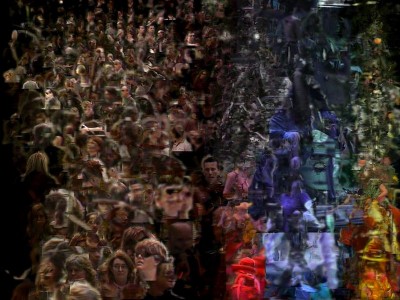
Sorting Daemon
Artwork | David Rokeby, 2003.
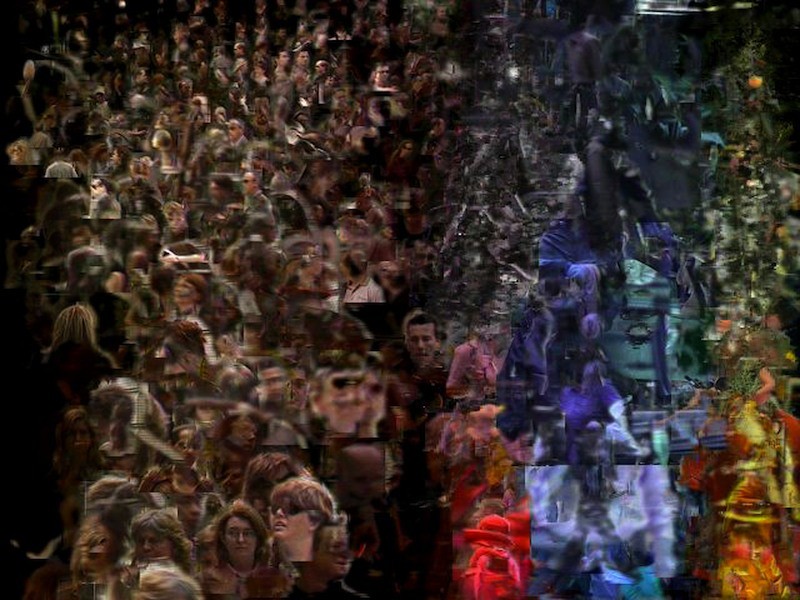
Sorting Daemon
Artwork | David Rokeby, 2003.
Computer, LCD screen, camera and projection | Goethe Institut, Toronto, ON. In multiple exhibitions.
This video installation was commissioned by the Goethe Institute in Toronto for its “Surveillance Terrorism Democracy” programme. In Rokeby’s own words, this piece “was triggered by my concerns about the increasing use of automated systems for profiling people as part of the "war on terrorism" and is an attempt to help ask questions about appropriate uses of technology.” To do this, Rokeby used a surveillance camera to track and record movement in an effort to look for people. When movement—a person—has been found, the image is captured and removed from its background context. Each of these images are then sequenced by colour and placed within a larger composite image projected within the Institute. With this work, Rokeby highlights the increasing invasion of surveillance technologies into everyday life, and challenges the presence and practicality of surveillance in contemporary society.
Website:
http://www.davidrokeby.com/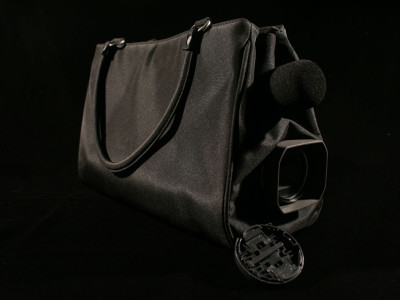
Hidden Camera
Artwork | Kathleen Ritter, 2008.
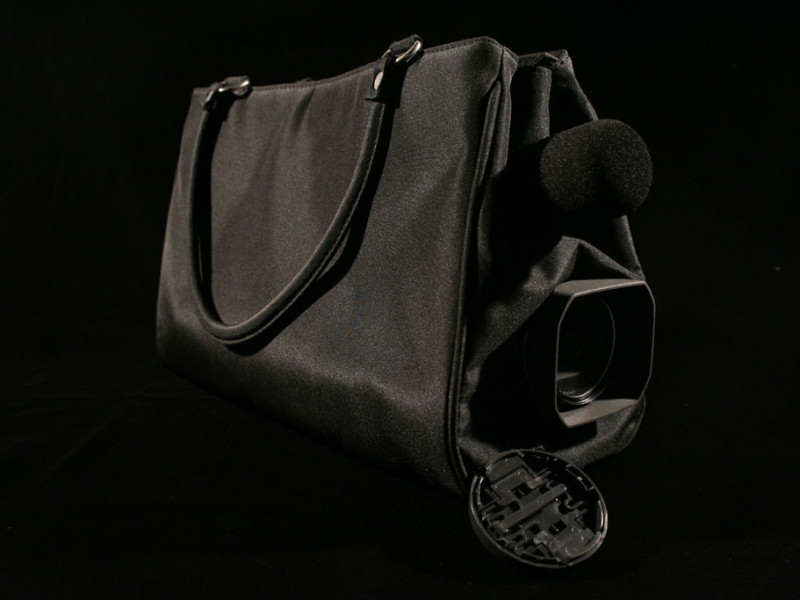
Hidden Camera
Artwork | Kathleen Ritter, 2008.
Pigment inket print | In multiple exhibitions, including “Wide Open,” Robert McLaughlin Gallery, Hamilton, ON, 2008, and “Sorting Daemons: Art, Surveillance Regimes and Social Control,” Agnes Etherington Art Centre, Kingston, ON, 2009.
This project offers a photograph of a hidden camera device and microphone used by Ritter to record a number of her performance pieces that documented different public sites, including grocery stores and airports. In this way, Ritter questions the complex power structures inherent to the politics of seeing/seen and visibility/invisibility in public spheres.
Website:
http://kathleenritter.com/ 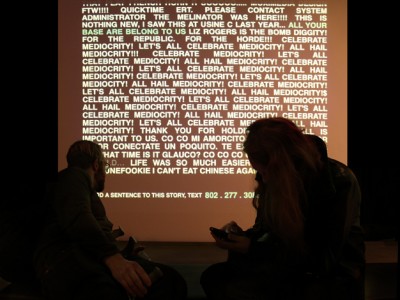
Sousveillance Project
Artwork | Jason Kuhrt, 2010-ongoing.
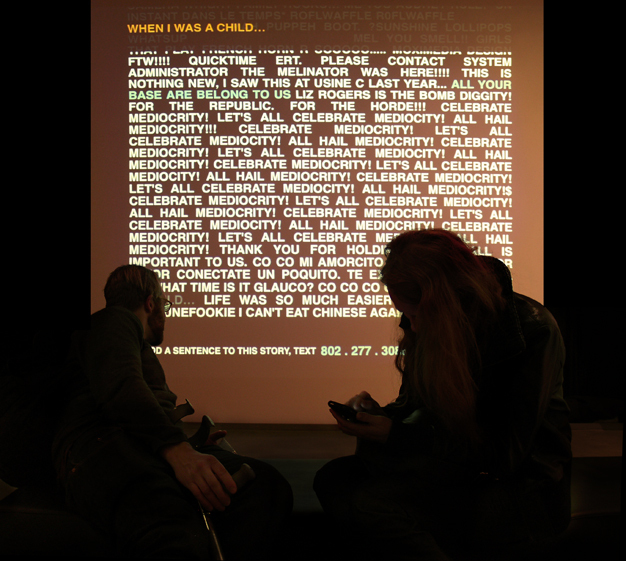
Sousveillance Project
Artwork | Jason Kuhrt, 2010-ongoing.
Interactive media | Online.
Jason Kuhrt’s Sousveillance Project is an interactive installation that allows strangers from all over the world to upload comments, messages, and quick texts from their mobile devices onto a database. The participants are anonymous and anyone can view the comments that contribute to the ongoing conversations around a variety of themes. With this piece, Kuhrt questions how people will react to each other’s anonymous comments.
Website:
While there does not seem to be a website organized by the artist himself, information about him and this project is available at https://www.behance.net/KUHRT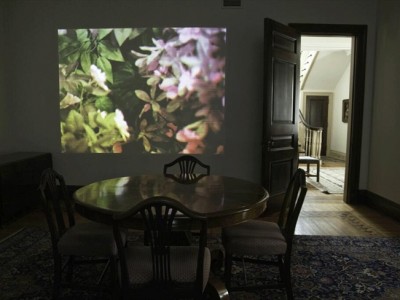
Rupture
Artwork | Arnold Koroshegyi, 2008.
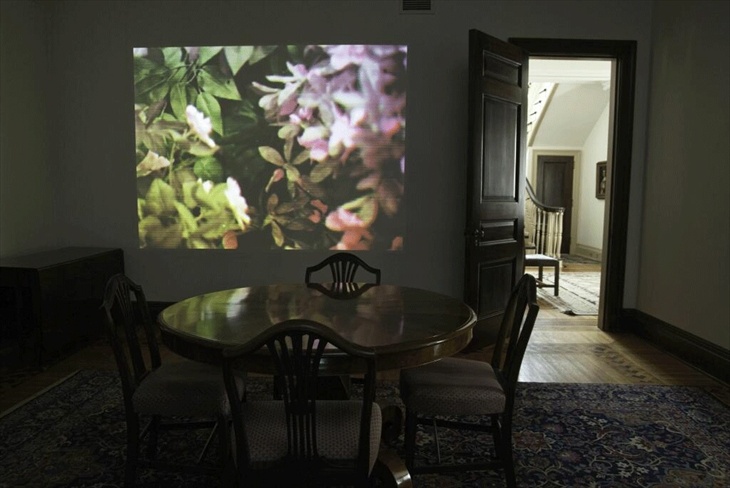
Rupture
Artwork | Arnold Koroshegyi, 2008.
6-minute looped DVD video | In the group exhibition “Sorting Daemons: Art, Surveillance Regimes and Social Control,” Agnes Etherington Art Centre, Kingston, ON.
Rupture is a video piece that juxtaposes the blurring of both photographic images and wireless technologies. To do this, Koroshegyi uses a flatbed scanner to closely trace photographs of artificial flowers. To further manipulate the resulting images, the artist uses FBI-developed surveillance software named Carnivore—which is the same program used to track “terrorists” and relies on the signals of local internet traffic—to guide the trajectory of the camera over the photographs. In his own words, “Rupture, through the interplay of the moving and static image, unsettles the focus: no longer can the eye contemplate the depth of the painterly photographs or try to discern the shapes beneath the pixilated blurs. Instead, the invisible blur of information is made visible through volatile camera movements that force the viewer's eye to shift strangely across the screen: perception flounders, inundated by technology and artifice.”
Website:
http://www.arnoldkoroshegyi.com/ 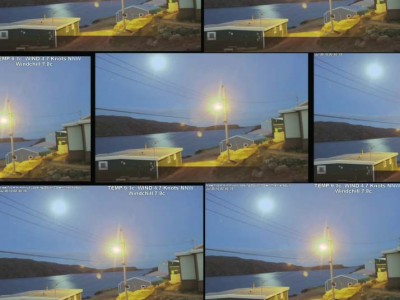
Pierre Tremblay
Artist
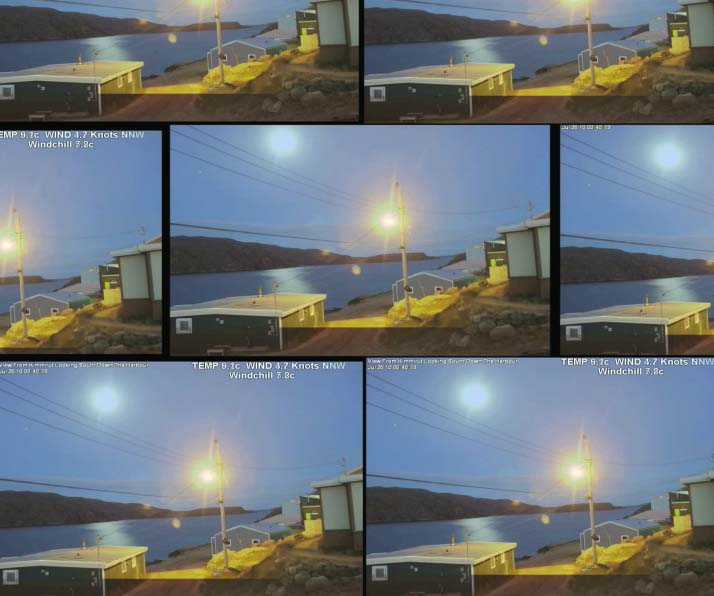
Pierre Tremblay
Artist
Database works: Tremblay, Pierre (with artists David Bouchard and Bruno Lessard, audio composer Alex Geddie). Meta Incognita, 2010. Video installation. Kimmirut, Baffin Island, Canada.
Tremblay is an interdisciplinary artist based in Toronto, where he is Associate Professor in the School of Image Arts programme at Ryerson University. Bringing together multiple technologies, Tremblay’s work often questions perceptions of the movement and flux of everyday life. He has exhibited widely, both nationally and internationally, and his works are held in numerous collections.
Website:
you see more of his work at Nunavut Lights website, http://nunavutlights.com/
David Rokeby
Artist

David Rokeby
Artist
Database works: Rokeby, David. Machine for Taking Time, 2001. Video projection, stored digital images, custom software. In multiple exhibitions, including “Early Delights/Deep Gardening,” curated by Su Ditta, Oakville Galleries, Oakville, ON. // Rokeby, David. Sorting Daemon, 2003. Camera, LCD screen, computer. Goethe Institut, Toronto, ON. In multiple exhibitions. // Rokeby, David. Gathering, 2004. Video installation. The Art Gallery of Hamilton, Hamilton, ON for the São Paulo Bienal. // Rokeby, David. Taken, 2002-2009. Video installation. In multiple exhibitions and locations, including Art Gallery of Hamilton, Hamilton, ON (2002); “Interaction '05,” Toronto International Art Fair, Toronto, ON (2005); “Profiling,” Whitney Museum of American Art, New York, NY (2007); “Synthetic Time,” National Art Museum of China, Beijing, China.
Based in Toronto, Rokeby is an installation artist who has been creating artworks since the 1980s. Much of his recent art practice uses digital media to question issues of surveillance and the differences between human and artificial intelligence. He has exhibited widely in national and international exhibitions, and is the recipient of a number of prestigious artist awards.
Website:
http://www.davidrokeby.com/
Kathleen Ritter
Artist

Kathleen Ritter
Artist
Database works: Ritter, Kathleen. Interloper, 2005. 4-channel video installation with sound, 100 performance scripts, photographs, map, map pins, cork board. // Ritter, Kathleen. Hidden Camera, 2008. Pigment inkjet print. 122 x 91.5 cm. In multiple exhibitions, including “Wide Open” at the Robert McLaughlin Gallery, Hamilton, ON, 2008, and “Sorting Daemons: Art, Surveillance Regimes and Social Control,” Agnes Etherington Art Centre, Kingston, ON, 2009.
Ritter is an artist and curator based in Vancouver and Paris. Her art practice often addresses the broad intersections of visibility with systems of power and technology. From 2007 to 2012, Ritter was Associate Curator at the Vancouver Art Gallery where she organized a number of exhibitions, including How Soon Is Now; Beat Nation: Art, Hip Hop and Aboriginal Culture (with Tania Willard); and Rebecca Belmore: Rising to the Occasion (with Daina Augaitis).
Website:
http://kathleenritter.com/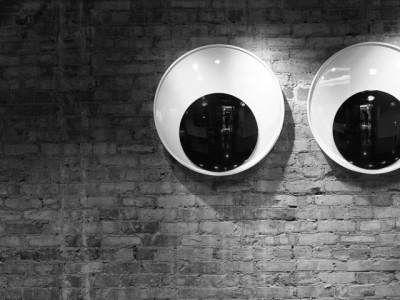
Jennifer Marman
Artist
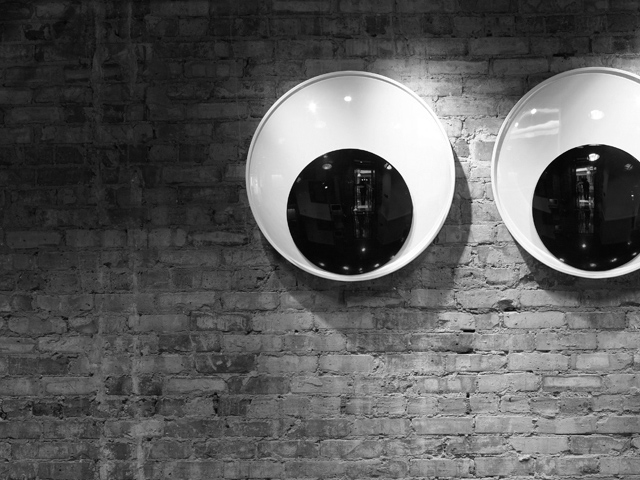
Jennifer Marman
Artist
Database works: Marman, Jennifer and Daniel Borins. Google, 2010. Installation. Toronto, ON.
Based in Toronto, Jennifer Marman completed her undergraduate work at the Unviersity of Western Ontario and her graduate work at OCAD University in Toronto, ON, where she met her collaborator Daniel Borins. The two have been working together since 2000, creating a variety of sculpture, installation, and multi-media works.
Website:
http://www.marmco.com/ 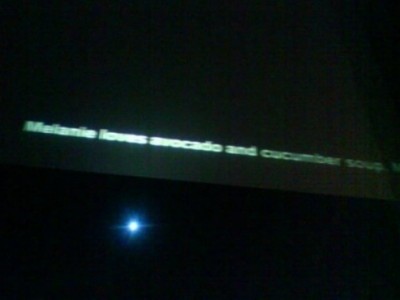
Melanie Lowe
Artist
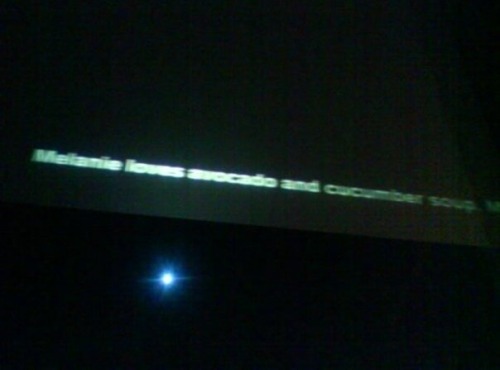
Melanie Lowe
Artist
Database works: Lowe, Melanie. You Saw Me?, 2008. New media database projection. In the exhibition, “Cake on the Icing,” curated by Shaun Dacey, InterAccess Electronic Media Arts Centre, Toronto.
Originally from Halifax, Lowe is a video and digital artist currently based in Toronto. Lowe earned a Bachelor of Design in Communication Design from NSCAD University, and a Master of Arts in Visual Art from York University. In her work, Lowe often questions the everyday actions and interactions between the self and others in contemporary life.
Website:
http://melanielowe.tumblr.com/ 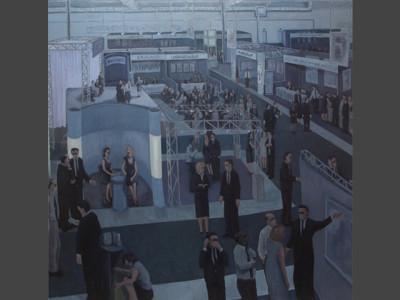
Michael Lewis
Artist
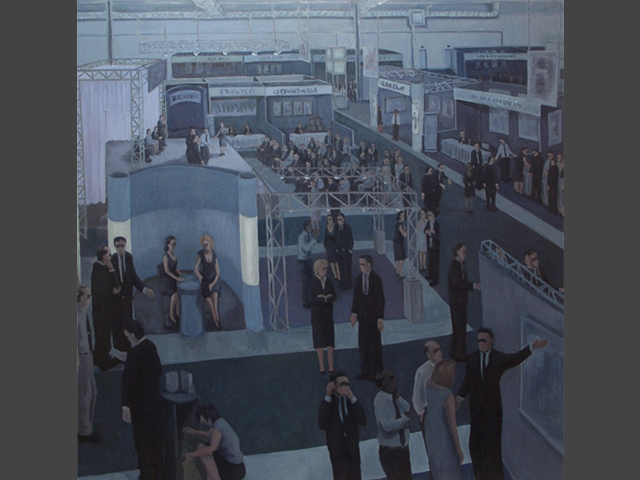
Michael Lewis
Artist
Database works: Lewis, Michael. Some Will Take More Prodding, Others Will Be More Difficult, 2008. Painting. In the group exhibition “Sorting Daemons: Art, Surveillance Regimes and Social Control,” Agnes Etherington Art Centre, Kingston, ON, 2009.
Originally from Hamilton, ON, Lewis currently lives and works in Toronto. He has been awarded a number of provincial and national artist grants for his work.
Website:
http://michaellewisartist.com/ 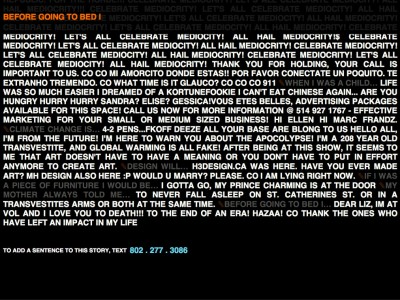
Jason Kuhrt
Artist
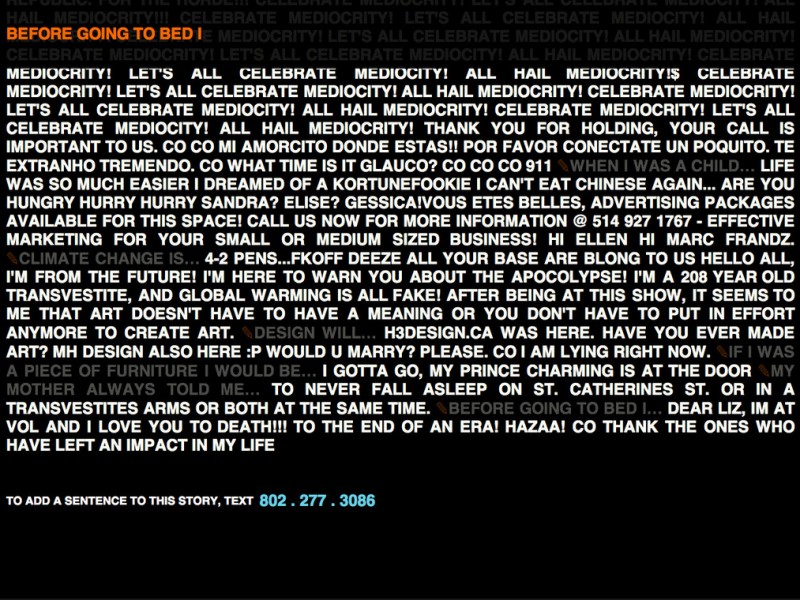
Jason Kuhrt
Artist
Database works: Kuhrt, Jason. Sousveillance Project, 2010-ongoing. Interactive media. Online.
Based in Montreal, Kuhrt graduated from Concordia University (Montreal) with a BFA in design. He currently works as a freelance creative designer and web programmer.
Website:
https://www.behance.net/KUHRT 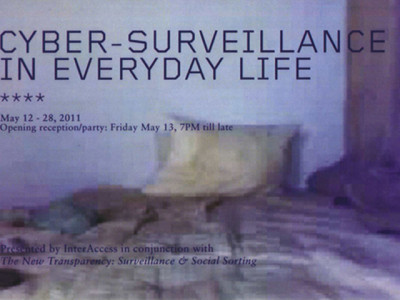
Cyber-Surveillance in Everyday Life: An Art Exhibition
Exhibition | 2011
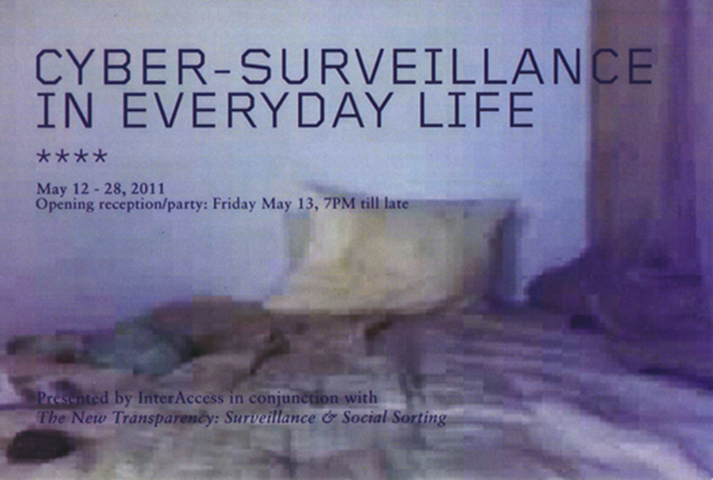
Cyber-Surveillance in Everyday Life: An Art Exhibition
Exhibition | 2011
Mounted as a partnered project between InterAccess Electronic Media Arts Centre, and the international workshop The New Transparency: Surveillance & Social Sorting at the University of Toronto | InterAccess Gallery, Toronto, ON.
From the exhibition’s publicity release: “Cyber-Surveillance in Everyday Life is organized in conjunction with the international workshop of the same name, taking place at the University of Toronto from 12-15 May 2011. The exhibition explores a number of the workshop’s central themes, such as the intersections between surveillance and social networking, identity and anonymity, and monitoring techniques. The five works brought together in Cyber-Surveillance in Everyday Life address the ubiquitous and distributed nature of surveillance.” Organized by InterAccess Electronic Media Arts Centre in partnership with The New Transparency: Surveillance & Social Sorting, this exhibition was arranged in conjunction with the international workshop of the same name, which took place at the University of Toronto from 12-15 May 2011.
Artists and artworks:
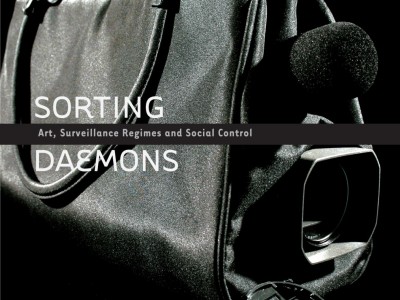
Sorting Daemons: Art, Surveillance Regimes and Social Control
Exhibition | Curated by Jan Allen and Sarak EK Smith, 2010
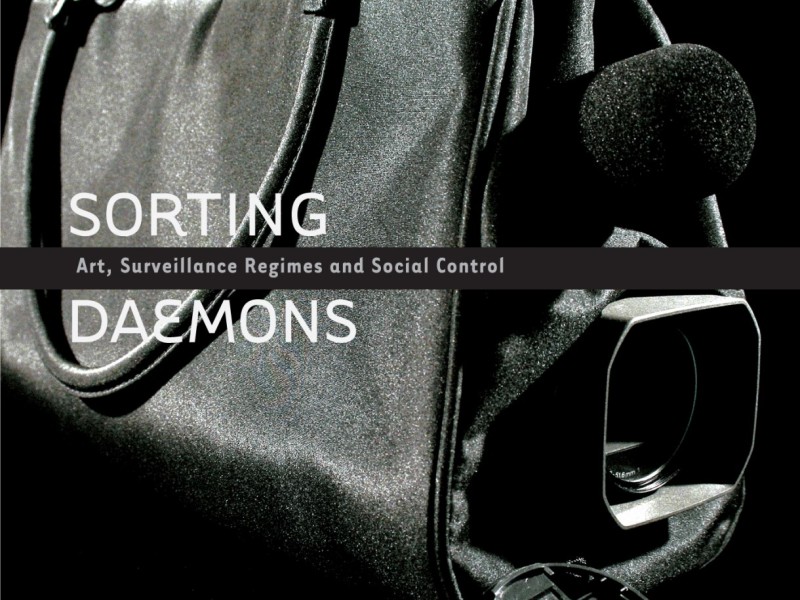
Sorting Daemons: Art, Surveillance Regimes and Social Control
Exhibition | Curated by Jan Allen and Sarak EK Smith, 2010
Mounted as a partnered project between the Art Centre and The New Transparency: Surveillance and Social Sorting at Queen’s University. | Agnes Etherington Art Centre, Kingston, ON.
Sorting Daemons was mounted at the Agnes Etherington Art Centre at Queen's University (Kingston) from 16 January to 18 April 2010. From the exhibition’s publicity release: “Information-gathering systems increasingly affect our lives, tracking our movement and consumer preferences. Such “sorting daemons” reinforce existing streams of influence and quietly create new ones. The artists in this exhibition take measure of our relationship to surveillance by addressing its social, political and aesthetic dimensions.” This exhibition was developed in partnership with The New Transparency and opened in conjunction with "Camera Surveillance in Canada: A Research Workshop" at Queen's University, Kingston that took place 14-16 January 2010.
Artists and artworks:
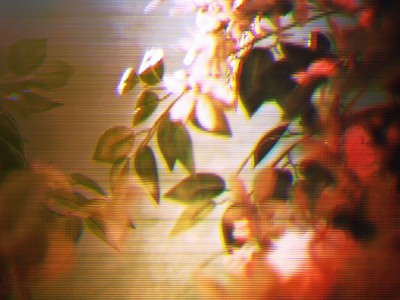
Arnold Koroshegyi
Artist
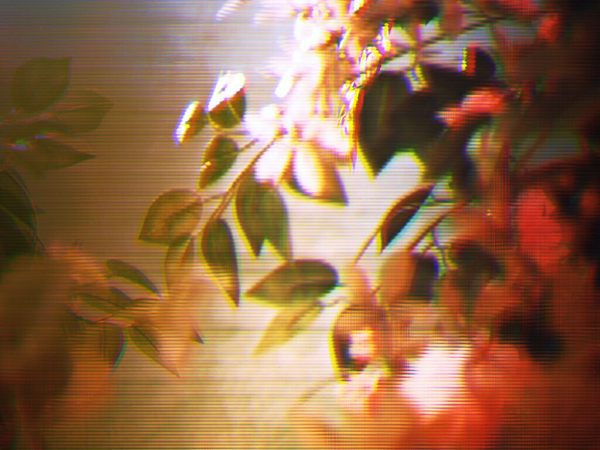
Arnold Koroshegyi
Artist
Database works: Koroshegyi, Arnold. Rupture, 2009. 6-minute looped DVD video. In the group exhibition “Sorting Daemons: Art, Surveillance Regimes and Social Control,” Agnes Etherington Art Centre, Kingston, ON.
Koroshegyi addresses the shifting concepts of place within geopolitical landscapes through his works in a variety of art media, including photography, installation, and intermedia. Based in Toronto, Koroshegyi teaches studio practices and art history at Sheridan College Institute of Technology and Advanced Learning, and the University of Toronto, Mississauga. His art has been exhibited throughout North America.
Website:
http://www.arnoldkoroshegyi.com/ 
Germaine Koh
Artist

Germaine Koh
Artist
Database works: Koh, Germaine with Ian Verchere. Broken Arrow. 2008 and 2009 versions. Various exhibitions, including the group exhibition “Sorting Daemons: Art, Surveillance Regimes and Social Control,” Agnes Etherington Art Centre, Kingston, ON, 2009.
Based in Vancouver, Koh is a conceptual artist who describes her art practice as focussed on “the significance of everyday actions, familiar objects and common places.” She has exhibited her works nationally and internationally, and also has an active curatorial practice.
Website:
http://germainekoh.com/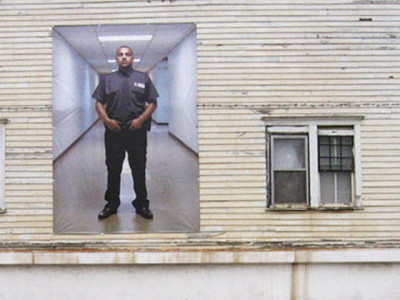
Thomas Kneubühler
Artist
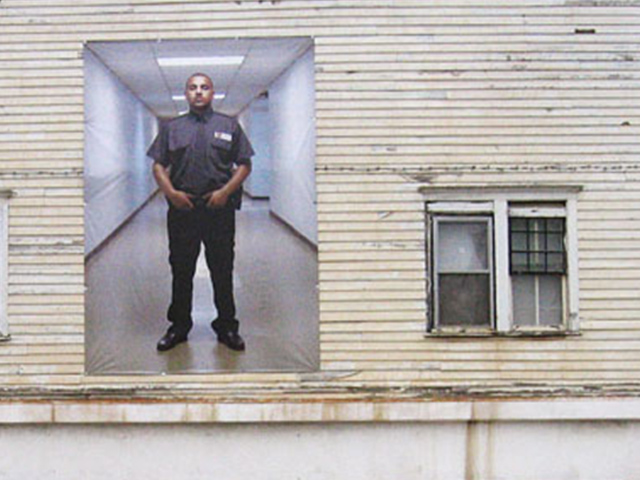
Thomas Kneubühler
Artist
Database works: Kneubühler, Thomas. Private Property, 2006. C-prints. Various locations. // Kneubühler, Thomas. Access Denied, 2007-2014. Inkjet prints on banner. Various locations within Montréal, PQ; Edmonton, AB; and Québec City, PQ.
Originally from Solothurn, Switzerland, Kneubühler currently lives and works in Montreal, where he completed his MFA at Concordia University in 2003. He has exhibited his work throughout North America and Europe. In much of his art practice, Kneubühler investigates the way in which technologies of surveillance and social control blur the boundaries of private and public spaces in the landscapes of everyday life.
Website:
http://www.thomaskneubuhler.com/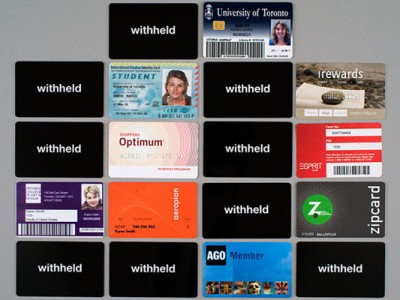
Dave Kemp
Artist
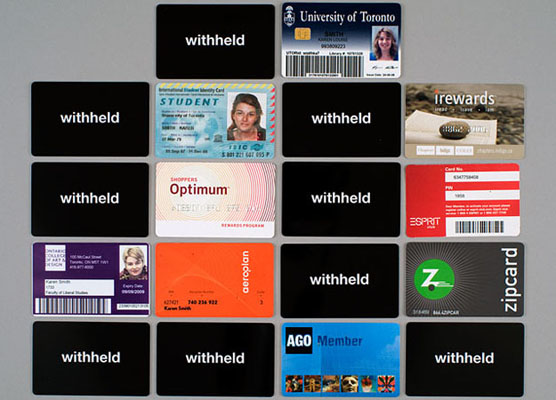
Dave Kemp
Artist
Database works: Kemp, Dave. Data Collection, 2009. In the group exhibition “Sorting Daemons: Art, Surveillance Regimes and Social Control,” Agnes Etherington Art Centre, Kingston, ON.
Kemp is a visual artist who, in his own words, “looks at the intersections and interactions between art, science and technology: particularly at how these fields shape our perception and understanding of the world.” He is currently completing his doctorate research in Art and Visual Culture at the University of Western Ontario.
Website:
http://davekemp.ca/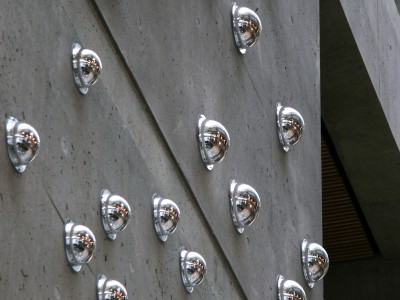
Antonia Hirsch
Artist
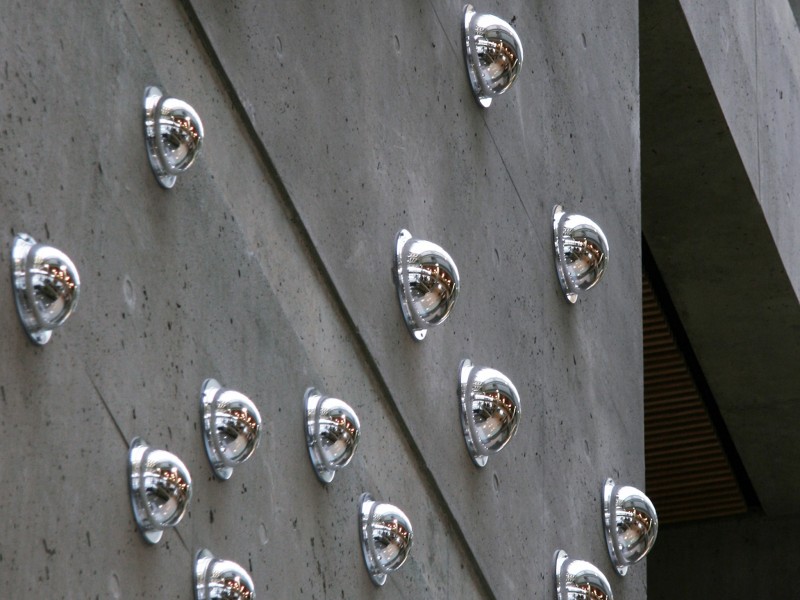
Antonia Hirsch
Artist
Database works: Hirsch, Antonia. Double Blind, 2008. Installation, mirrored acrylic domes. W 4.5m x H13.7m x D .5m. Vancouver Community College. Vancouver. // Hirsch, Antonia. the invisible hand (after Adam Smith), 2009. 360-degree surveillance mirrors, fasteners. W 1047cm x H 511cm x D 11.5cm. Various locations.
Hirsch is a Berlin-based writer, artist, and editor, who has exhibited and published her work widely throughout North America and Europe.
Website:
http://antoniahirsch.com/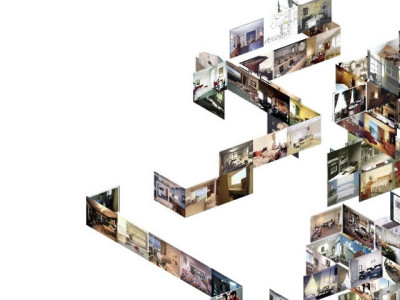
Marika Dermineur
Artist
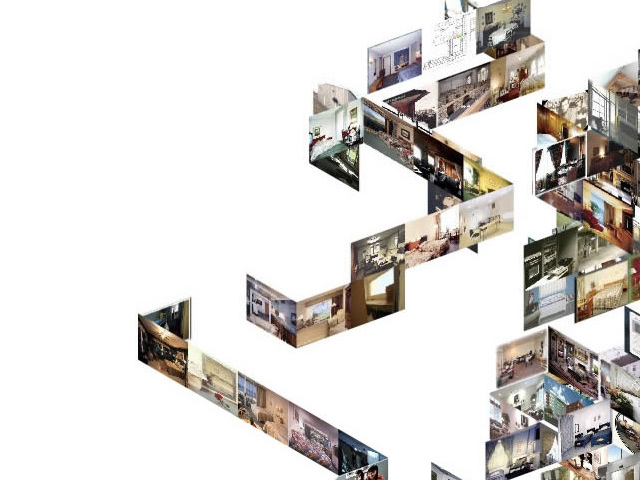
Marika Dermineur
Artist
Database works: Dermineur, Marika and Stéphane Degoutin. Google House, 2003-ongoing. Interactive online installation.
Dermineur lives and works in Paris, France. Her practice seeks to question the ways in which computer networks and programmes can create narratives using sound, language, and image. In particular, she specializes in artistic creation for and on the Internet. She is a member of the experimental group Incident.net, which is based in France, Canada, Senegal, and the Internet since its formation in 1994 (http://incident.net/). Dermineur has disseminated her research and art practices both nationally and internationally.
Website:
http://marika.incident.net/ 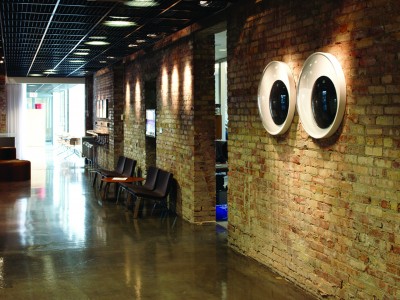
Daniel Borins
Artist
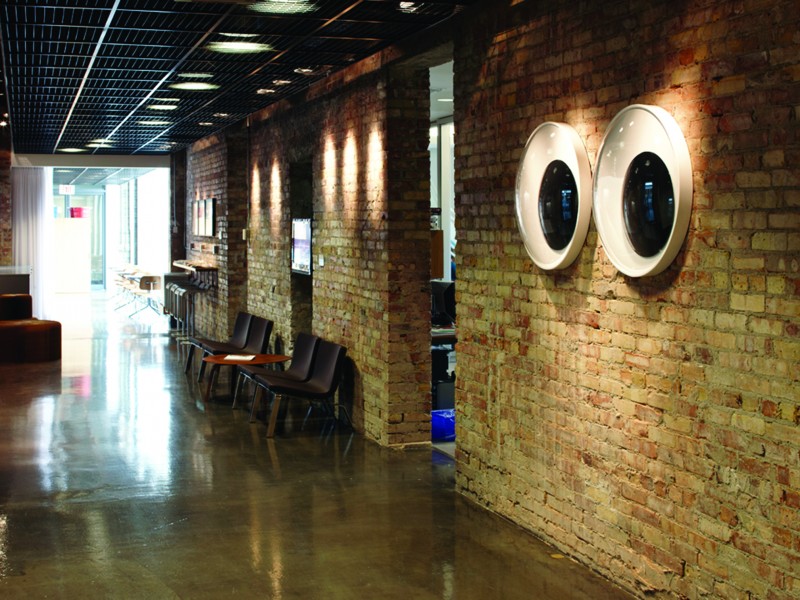
Daniel Borins
Artist
Database works: Marman, Jennifer and Daniel Borins. Google, 2010. Installation. Toronto, ON.
Based in Toronto, Daniel Borins completed his undergraduate work at McGill University in Montreal and his graduate work at OCAD University in Toronto, ON, where he met his collaborator Jennifer Marman. The two have been working together since 2000, creating a variety of sculpture, installation, and multi-media works.
Website:
http://www.marmco.com/ 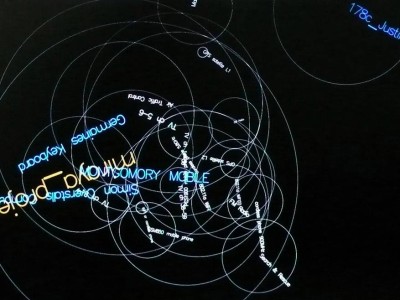
Broken Arrow
Artwork | Germaine Koh with Ian Verchere, 2008 and 2009 versions
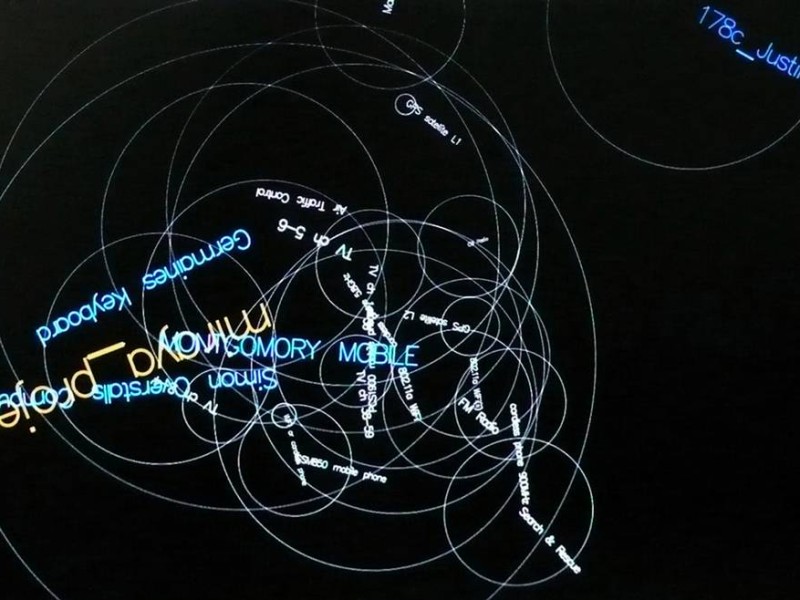
Broken Arrow
Artwork | Germaine Koh with Ian Verchere, 2008 and 2009 versions
Electronics and custom software | Various exhibitions, including the group exhibition “Sorting Daemons: Art, Surveillance Regimes and Social Control,” Agnes Etherington Art Centre, Kingston, ON, 2009
Created by Koh in collaboration with Ian Verchere, Broken Arrow uses sensing hardwares to track and trace blue-tooth technologies within a particular radius of the piece. The artwork captures the signals and electronic communication found in wireless devices such as Bluetooth, Wi-Fi, cellular phones, radio, and GPS, each registered signal marked by an auditory signal and a visual design. In this way, Broken Arrow makes visible these often invisible technologies and their signals. Koh’s installation reveals the often unseen ways information transmitted and shared via social devices, and reminds its viewers about the risks associated with social networks and privacy.
Website:
http://germainekoh.com/ 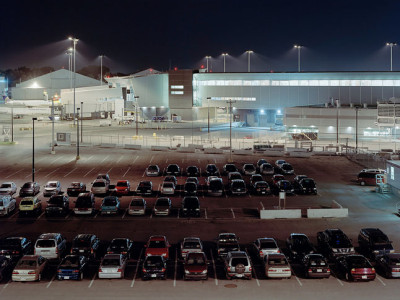
Private Property
Artwork | Thomas Kneubühler, 2006
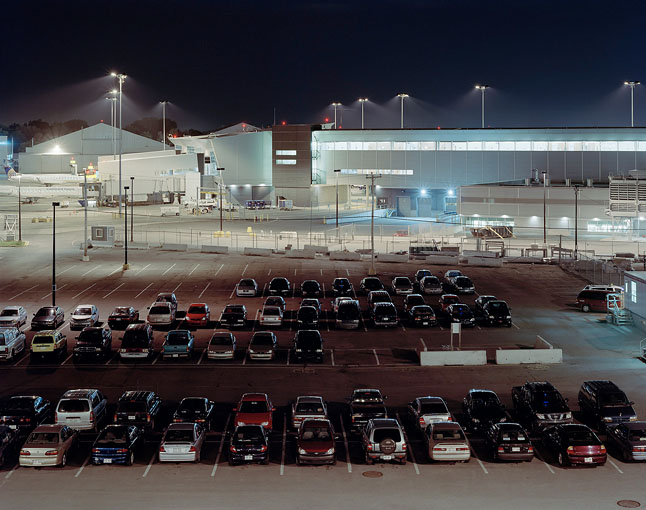
Private Property
Artwork | Thomas Kneubühler, 2006
C-prints | Various locations
Kneubühler’s piece Private Property involves a series of photographs of the spaces of private corporate property and portraits of the personnel who are tasked with securing them. The representations of the empty spaces of commerce mimic angles of surveillant viewing, highlighting the omnipresent technologies monitoring movement and access. The images of the security personnel portraits frame the guards within these empty, often lonely, spaces as the sole human presence, and highlight the presence of those who are often unseen behind the camera. As such, Private Property explores the relationship of the personal and impersonal in various systems of security and surveillance, and examines who and what commands the authority to watch and control.
Website:
http://www.thomaskneubuhler.com/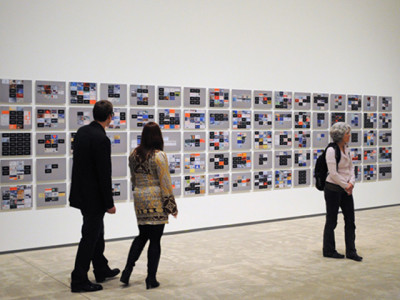
Data Collection
Artwork | Dave Kemp, 2009.
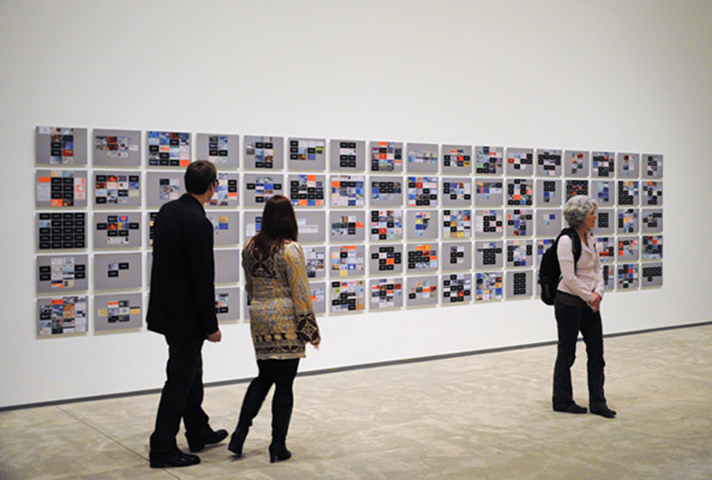
Data Collection
Artwork | Dave Kemp, 2009.
Photographic installation | In the group exhibition “Sorting Daemons: Art, Surveillance Regimes and Social Control,” Agnes Etherington Art Centre, Kingston, ON.
This installation by Kemp was created as part of the group exhibition “Sorting Daemons: Art, Surveillance Regimes and Social Control” at the Agnes Etherington Art Centre in Kingston, ON. Data Collection is composed of photographs of identification cards from 100 different people. Arranged as part of a large grid pattern on the wall, each of the photographs is the same size as the cards so that identification information outlined on it is available to viewers, although participants are allowed to remove any cards containing information they are uncomfortable with having displayed publicly—these removed cards are marked with a black square with “withheld” printed in white on it. Kemp’s piece questions the circulation over information related to identity, privacy, and security, and who has and is allowed to access and maintain control over such information.
Website:
http://davekemp.ca/ 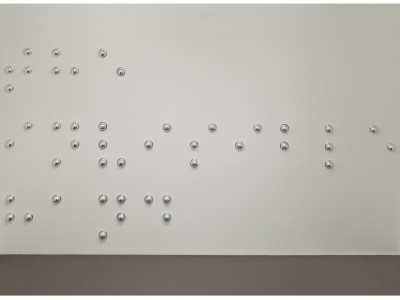
the invisible hand (after Adam Smith)
Artwork | Antonia Hirsch, 2009
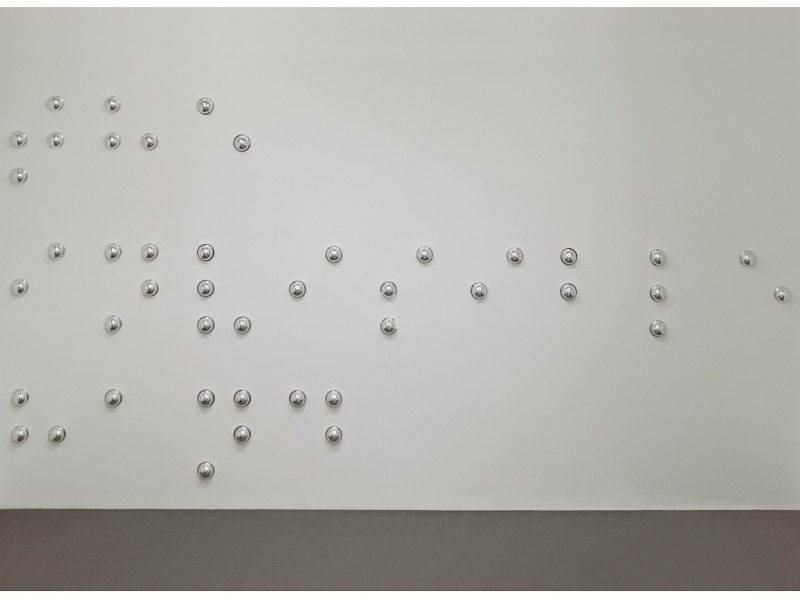
the invisible hand (after Adam Smith)
Artwork | Antonia Hirsch, 2009
360-degree surveillance mirrors, fasteners. W 1047cm x H 511cm x D 11.5cm | Various locations
The invisible hand is a sculptural installation that wall-mounts domed mirrors to spell out the phrase “the invisible hand” in braille. Based on Adam Smith’s writing in The Wealth of Nations (1776), this work questions the perception that the conditions of a free-market economy (ie. one without controls) is unbiased and “blind.” In this work, Hirsch juxtaposes the idea of the “blindness” of capitalism, with the technologies of seeing and surveillance (the domed mirror) and communication for the visually impaired (braille) to play with and challenge the various systems of self-regulation and control in everyday society.
Website:
http://antoniahirsch.com/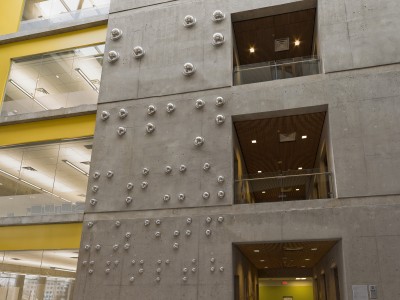
Double Blind
Artwork | Antonia Hirsch, 2008
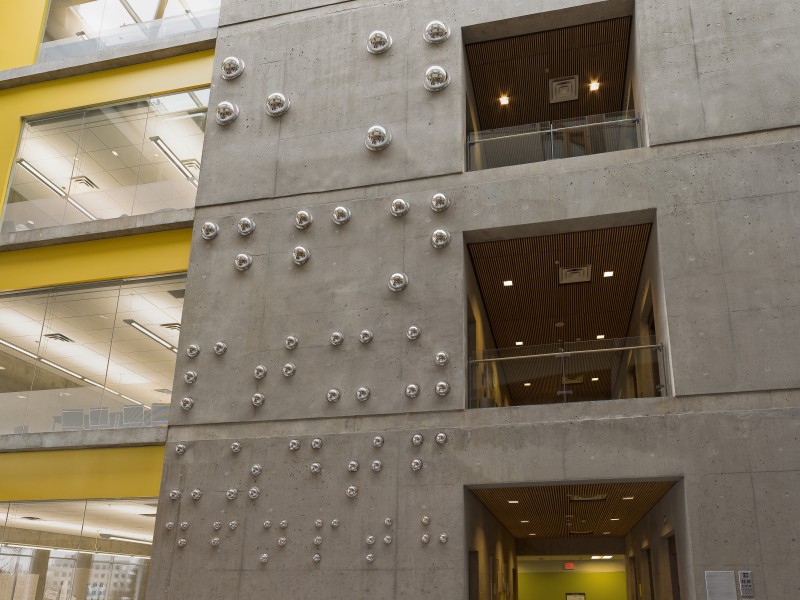
Double Blind
Artwork | Antonia Hirsch, 2008
Installation, mirrored acrylic domes. W 4.5m x H13.7m x D .5m | Vancouver Community College
Double Blind is a sculptural installation situated in the atrium of the new Vancouver Community College’s Broadway Campus building. The work mounts domed mirrors on the side of the wall, using these structures to create braille patterns that imitate the Snellen chart used by optometrists to test visual acuity. With this work, Hirsch questions the relationship of visuality and surveillance, public safety and control by organizing the familiar form of the domed mirror—common security devices—in an unfamiliar way. In Hirsch’s own words, “Double Blind deliberately and emphatically utilizes elements that are commonly found in public space and re-purposes them, thereby highlighting the quality of the space itself, rather than offering a pictorial escape from its reality. Double Blind queries the interlinked ideas of seeing and controlling, acknowledging the importance of the context in which information is acquired and processed, whether that context is a scientific doctrine, social matrix, or language system.”
Website:
http://antoniahirsch.com/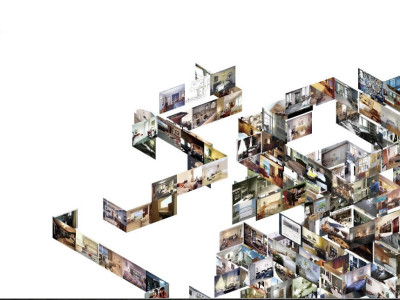
Google House
Artwork | Marika Dermineur and Stéphane Degoutin, 2003-ongoing
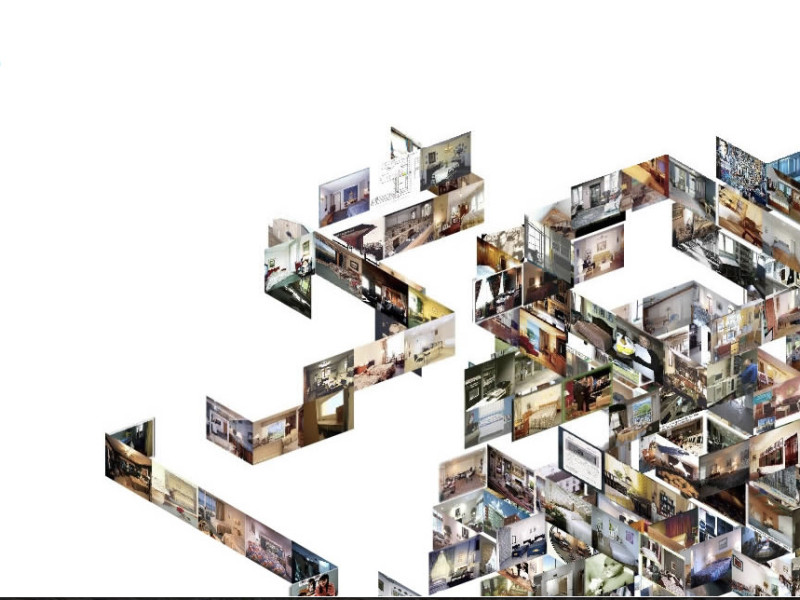
Google House
Artwork | Marika Dermineur and Stéphane Degoutin, 2003-ongoing
Interactive Online Installation
Google House is an online interactive installation that incorporates found images from www.google.com into a database. This piece collects images found in the public domain of Google and creates an interactive web design of a house, which viewers can explore by clicking on an image. Each of the walls of the house are composed of different images of houses retrieved from Google images and Google maps. By clicking on a wall, viewers are invited to have a closer, more intimate look at the image. This interactive online piece by Dermineur and Degoutin questions the notion of differentiated private and public spheres, and the ways that Google and other social media sites can collect and retrieve private images for their databases.
You can access the piece at http://googlehouse.net/. You can find more information about Marika Dermineur on her website, http://marika.incident.net/. More information about Stéphane Degoutin is available at http://www.nogoland.com/.
Website:
http://googlehouse.net/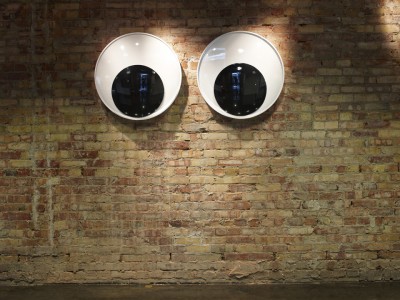
Google
Artwork | Jennifer Marman and Daniel Borins, 2010
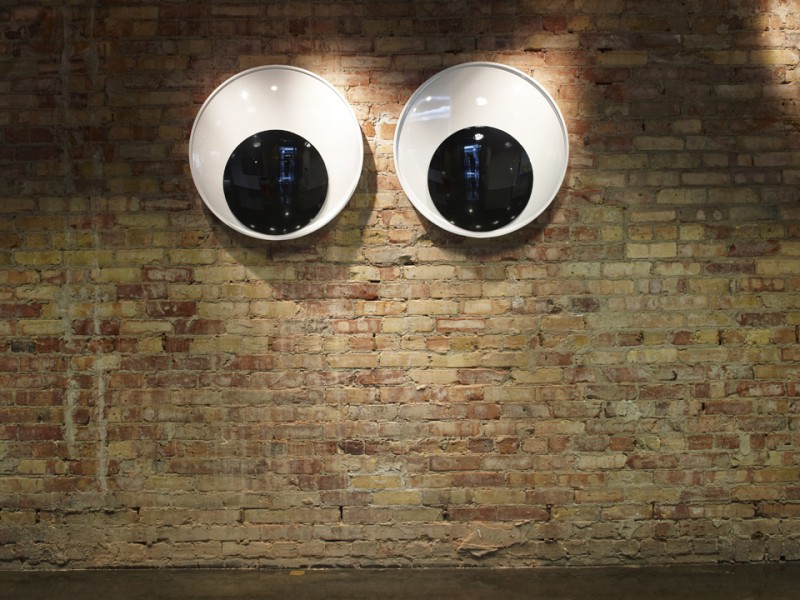
Google
Artwork | Jennifer Marman and Daniel Borins, 2010
Installation | The Martin Prosperity Institute
Commissioned by the Martin Prosperity Institute in Toronto, Google is a sculptural installation composed of two large “googly” eyes mounted on a wall. Hidden cameras inside the sculpture watch, track, and record people as they pass by, adding a potentially sinister element to the humour offered by the googly-eye form. The title of the piece, Google, acknowledges the ways in which the search engines watch and record user data for ambiguous reasons. With this work. Marman and Borins combine humour and surveillance technologies to highlight how personal surveillance and data collection by governments and corporations occur in our physical and virtual everyday lives, and to question whether we should trust them.
Website:
http://marmco.com/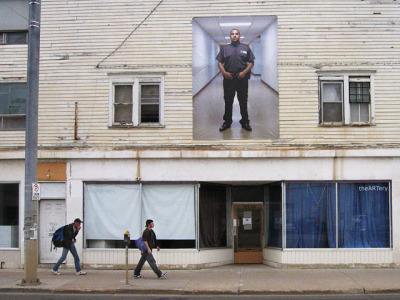
Access Denied
Artwork | Thomas Kneubühler, 2006
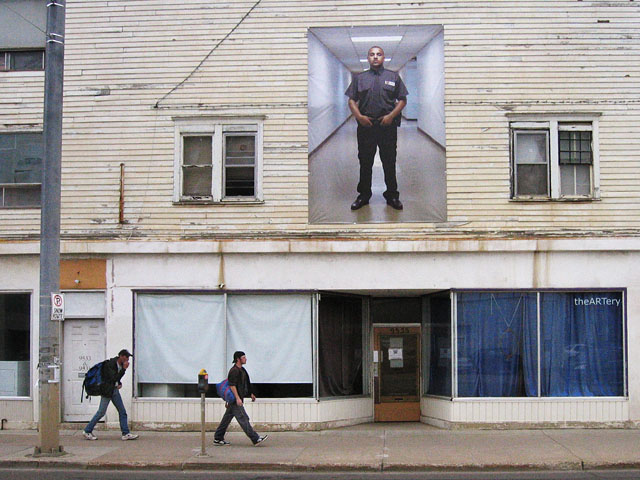
Access Denied
Artwork | Thomas Kneubühler, 2006
C-Prints | Various Locations
Access Denied is a site specific installation that was mounted on the external walls of buildings in Montréal as part of “Le Mois de la Photo à Montréal” in 2007; in downtown Edmonton in 2009; and in Québec City in 2014. For this work, Kneubühler hung large banners with printed images of security guards that appear to be monitoring the local area. This work draws attention to the role and bodies of the personnel tasked with supervising and controlling the behaviours of the public in particular ways. In this way, Access Denied makes the bodies of those who watch—in larger than life-size forms—a visible presence to those who are watched to complicate this relationship of watcher-watched as part of surveillance structures, control, and regulation.
More information is available on the artist’s website, http://www.thomaskneubuhler.com/
Website:
http://www.thomaskneubuhler.com/